HOPE JUSTICE&HOPE JUSTICE

memoir exposes truths about missing and murdered Indigenous women and girls.

See page 7



memoir exposes truths about missing and murdered Indigenous women and girls.

See page 7





Notorious Georges

Crime and Community in British Columbia’s Northern Interior, 1905-25
Jonathan Swainger

Boozy and boisterous, the Georges – the communities that ultimately became Prince George – have had a seedy reputation since before the First World War, but is Prince George really such a bad lad?
Meeting My Treaty Kin
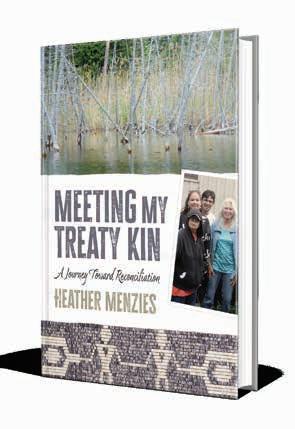
A Journey toward Reconciliation
Heather Menzies
This intimate story of one settler’s journey toward reconciliation reveals the rich potential that comes from learning to listen and change –decolonization not as to-do list, but as a lived experience.
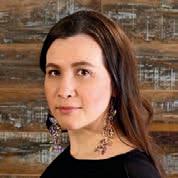




Lynn McCarron
British Columbia Lullaby (Sandhill Book Marketing $14.95)
Geoff Mynett
The Eventful Life of Philip Hankin: Worldwide Traveller and Witness to British Columbia’s Early History (Caitlin $26)
Lucia Frangione Grazie (Talonbooks $21.95)
Leona & Gabrielle Prince
Be a Good Ancestor (Orca $21.95)
Lyn Baldwin
Drawing Botany Home: A Rooted Life (Rocky Mountain Books $30)
Katherine Martinko
Childhood Unplugged: Practical Advice to Get Kids Off Screens and Find Balance (New Society $24.99)
Michael Nicoll Yahgulanaas
A Haida Manga (Douglas & McIntyre $34.95)
Upon completing her draft novel about trauma infecting four generations of a family, Jasmine Sealy won the UBC/ HarperCollins Best New Fiction Prize in 2020, which comes with a book deal with HarperCollins. Now released, The Island of Forgetting (Harper Avenue $24.99), set primarily on the Caribbean island of Barbados, chronicles the lives of characters with names like Iapetus, Cronus and Nautilus. The links to Greek mythology are clear, and this family saga is rife with universal themes. We are introduced to Iapetus first, a man driven mad by having seen his brother and mother kill their father. “He always comes back, my father,” Iapetus says in the


Philippa Joly
A Kid’s Guide to Plants of the Pacific Northwest with Cool Facts, Activities and Recipes (Harbour $26.95)
Hilary Peach
Thick Skin:
Field Notes from a Sister in the Brotherhood (Anvil $22)
Trevor Marc Hughes
Capturing The Summit: Hamilton Mack Laing and the Mount Logan Expedition of 1925 (Ronsdale Press $24.95)
Sam George, Jill Yonit Goldberg, Liam Belson, Dylan MacPhee, Tanis Wilson
The Fire Still Burns: Life In and After Residential School (UBC Press $19.95)
Rika Ruebsaat
My Paddle’s Keen and Bright (New Star $24)
Author, actor and accomplished swordsman C.C. Humphreys has released his 22nd novel Someday I’ll Find You (DoubleDay $25.00), which quickly found its way on to the Globe & Mail’s list of top Canadian fiction books for three weeks. Set against the backdrop of World War II, this story is full of intrigue, espionage, longing and an appreciation for classical music. Humphreys has combined thorough research with complex characters that will interest historians and romantics alike. He also wove in his family history (Humphreys’ father, a British fighter pilot during the war, met Humphreys’ mother, a Norwegian spyin-training, in London). This is the novel, says Humphreys, that he “had to write,” but delving into his family’s past was not always easy. Both the bad and the good that comes with being involved in a war had to be addressed. Humphreys creates a story that will transport readers to the challenges, pains and hope of the 1940s.
prologue. “He whispers in my ear and tells me that no one is safe … That things that begin precious and pure can become poisoned. That there is a rot in our lineage, a stink that lingers over us all.”
A family hotel business connects each generation and reveals the reallife destructive effects of tourism on Barbados, which is where Sealy grew up before moving to Canada. As a teen, Sealy waitressed in the main port in Barbados, coming into contact with tourists on a daily basis.
Sealy also won the $60,000 Amazon First Novel Award and was a finalist for the Kobo Emerging Writer Award and the OCM Bocas Prize for Caribbean Literature. She is currently working on her second novel.
9781443465212
Prior to turning his hand to historical novels and fantasy fiction, Humphreys worked as an actor for 25 years playing roles as diverse as Hamlet, Clive Parnell on Coronation Street and a gladiator for the 1980s NBC/BBC miniseries AD Anno Domini 9780385690515

tC.C. Humphreys was a schoolboy fencing champion, which later led to jobs as a fight choreographer for actors.
More than 2,300 illicit drug users died in BC in 2022, higher than in any previous year. In Vancouver alone, one or more people per day dies from toxic drugs. This carnage is likely to continue as former Vancouver mayor Kennedy Stewart outlines in Decrim: How We Decriminalized Drugs in British Columbia (Harbour $24.95). While the book’s focus is on the toxic drug crisis, Kennedy also writes of his political career trajectory and why progressive changes to past approaches for drug treatment have been so hard to achieve. Treating the calamity as a criminal justice issue rather than a public health problem has been the norm, and it’s not working. But politicians dragged their feet on the first small step of decriminalization (decrim for short) because it is misunderstood and overly politicized. Voting for policies like decrim generally leads to politicians losing elections. This book explains how little our current system offers drug addicts and how far we still have to go to prevent toxic drug deaths, even when there is the political will to do so.
9781990776304
Publication Mail Agreement #40010086
Return undeliverable Canadian addresses to: BC BookWorld, P.O. Box 93536, Vancouver, B.C. V6E 4L7
BOOKWORLD
2023
Publisher: Beverly Cramp
• Editor / Design: David Lester
Produced with the sponsorship of Pacific BookWorld News Society.
Publications Mail Registration No. 7800.
BC BookWorld ISSN: 1701-5405
Advertising & editorial:
BC BookWorld
P.O. Box 93536, Vancouver, B.C. V6E 4L7 Tel: 604-736-4011
Contact: bookworld@telus.net
Annual subscription: $25
Indigenous Editor: Latash-Maurice Nahanee

Contributing editors & writers: Alexander Varty, John Moore, Heidi Greco, Mark Forsythe, Graham Chandler, Valerie Green, Caroline Woodward, Odette Auger
Proofreaders: Erin F. Chan, Graham Chandler
Publishing Intern: Aleisha Hall
Accounts: Ingela Kasparaitis
Consultants: Ken Lapp, Kenneth Li

Deliveries: Ken Reid, Acculogix
We gratefully acknowledge the unobtrusive assistance of the Canada Council, a continuous partner since 1988, and CreativeBC, a provincial partner since 2014.
In-Kind Supporters: Simon Fraser University Library; Vancouver Public Library; University of BC Library
heritage house
A Haida Wedding Terri-Lynn Williams-Davidson with Robert Davidson
A visual and cultural celebration of a traditional Haida wedding ceremony, the first in more than a century.
$29.95 pb
Freddie
The Rescue Dog Who Rescued Me
Grant Hayter-Menzies
The moving memoir of a writer and biographer of historical animals whose life was forever changed by a rescue dog.

$24.95 pb | $12.99 ebook
rocky mountain books
Fleece and Fibre Textile Producers of Vancouver Island and the Gulf Islands Francine McCabe

A fascinating look at the region’s vibrant fleece and fibre community and the landbased textile economy.
$34.95 pb | $17.99 ebook
Blue Camas, Blue Camas
Danielle S. Marcotte; Alyssa Koski (illus.)

The poignant story of a Lkwungen community and a group of Irish settlers who see the land in very different ways.

$22.95 hc $11.99 ebook
Grizzly Bear Science and the Art of a Wilderness Life

Bruce McLellan
Natural history highlighted by forty years of grizzly bear research and family life in the Flathead Valley.
$32 pb | $15.99 ebook
touchwood editions
Instead
Maria Coffey
A compelling memoir about opting for adventure instead of motherhood, and the life-long outcomes of that choice.


$28 pb $13.99 ebook
Inside the Belly of an Elephant
Todd Lawson
An adventurous motorcycle journey of loss, legacy and freedom through South America and Africa.
$30 pb $14.99 ebook
Gone Viking III

The Holy Grail
Bill Arnott
Travel the ancient world with Bill Arnott as he unearths Viking secrets to reveal history’s most elusive treasure, the holy grail!
$30 pb | $14.99 ebook
The Cobra and the Key

A Novel Sam Shelstad
A brilliantly funny novel in the form of a highly original and slightly unhinged creative writing guide.
$22 pb $12.99 ebook
In the Belly of the Sphinx
A Novel Grant Buday
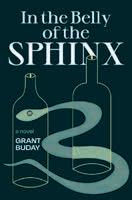
An eccentric coming-of-age story of a capricious young woman trying to find her way in the world.
$25 pb $12.99 ebook
Let’s Eat Recipes for Kids Who Cook

DL Acken & Aurelia Louvet
Kid-friendly without being too kiddish, this cookbook teaches skills and provides tips and recipes for chefs aged 9+.
$40 hc | $17.99 ebook
Heaven on the Half Shell
The Story of the Oyster in the Pacific Northwest

David George Gordon
A history of how oysters shaped the environment, cultures, and economies of the Northwest.
$35 pb
Josie Teed left city life and spent a year in the town of Wells (population 250) while working as a curatorial assistant and costumed interpreter at Barkerville Historic Town, which she chronicles in her memoir, British Columbiana: A Millennial in a Gold Rush Town (Dundurn $22.99). Having recently completed a master’s thesis in medieval archeology, Teed’s ruminations on the “Disneyfication” of history and the characters she rubs up against in “The West” are insightful. “I thought that, although it was a common genre of film, no one really paid much attention to the fact that the west was not some big homogenous thing,” she writes. “I suppose the stories were all the same: some representation of the idea of manifest destiny, and later in post-Westerns, subversions of it. Is that the only thing these places had in common? That and cowboy boots and mud and cows and horses and some misguided notion that they deserved to survive out there because they were stronger than other people?”
9781459750210
In 2017, Vancouver cyclist Meaghan Marie Hackinen entered the Trans Am Bike Race in the US. It’s a race “only for crazies,” says British-German Juliana Buhring, another ultraendurance cyclist and writer, that requires entrants to cover 4,264 miles (6,862 kilometres), ten states, several mountain ranges and over 150,000 feet of vertical gain. The goal is simple, writes Hackinen in her travelogue Shifting Gears: Coast to Coast on the Trans Am Bike Race (NeWest $23.95): “get on your bicycle and ride across the country, as fast as you possibly can.” With only self-support (no teams), the route is grueling. Hackinen describes her body giving out in a few instances, like day four when she tried to cup water with her hands. “My fingers simply refused to come together,” she writes. “I pawed my cheeks, trying to coax feeling into fingertips.” But she recovers and carries on, enjoying the landscape as if it were “the glossy pages of a coffee-table book” and feeling like she and the other cyclists “were cowboys on metal horses—blasting off in search of untold adventure.” Most ride through the night, catch a little sleep and get up at 4 am to start again. Hackinen finishes in 25 days.


9781774390801

Saying goodbye to a feline friend is never easy. In the illustrated children’s book Paradise for Cats (Harbour $19.95), Adrian Raeside has created a utopia where cats, dogs, birds and mice all get along in the afterlife. This new cat-centric tale “purrfectly” complements Raeside’s 2012 bestseller The Rainbow Bridge: A Visit to Pet Paradise (Harbour), only this time we follow the story of young Amy and her cat, Rocky. When Rocky passes away, Amy gets to visit her at the Rainbow Bridge, a paradise where she learns that there’s a happily “furever” after for pets and their human companions. Raeside’s aim is to bring hope and humour to an otherwise sorrowful topic.
9781990776175
Ahotel could be built for $10,000 in BC in 1896, which the gold prospector turned hotelier Jim Wallace learned when he set up the first such establishment in Princeton, as portrayed in Room at the Inn: Historic Hotels of British Columbia’s Southern Interior (Heritage $26.95) by Glen A. Mofford. Like many of the wooden structures of the period, the Princeton Hotel burned down in 1911; it was rebuilt in brick in 1912 and remained a landmark until it too was lost to fire in 2006. Mofford, a historian with a passion for BC’s social history,

died in 2022 days, after completing the manuscript for Room at the Inn, in which he describes 40 historic hotels in the southern interior of the province. The remarkable characters who built and ran these establishments are as much a part of this posthumously published book as the hotel buildings, many of which served as community centres for the boombust towns that sprang up when gold diggers, miners, settlers and eventually tourists shaped BC’s culture in the late nineteenth and early twentieth centuries. Mofford’s diligent research turned up plenty of colourful anecdotes about a bygone era.
9781772034233
Cowboy boots, mud & a millennial in WellsJosie Teed Meaghan Marie Hackinen Art by Adrian Raeside, Paradise for Cats Meaghan Marie Hackinen











Like the land Unbroken was written on, opening up “like a palm from a fist,” Angela Sterritt (Gitxsan) releases the truths of murdered and missing Indigenous women and girls in her new book. Sterritt doesn’t just write about our sisters; she walks with them. I pre-ordered Unbroken the same day it was announced—when an Indigenous woman uses the power of her voice, I stop and listen.
Beginning with a trigger warning (of the violence and trauma about to be described) wrapped in “an offering of love, kindness, and care to blanket and comfort you,” Sterritt’s voice rings with compassion as she invites us to take this journey with her. Sterritt is an award-winning investigative journalist for CBC Vancouver whose work is hallmarked by a commitment to amplifying Indigenous voices. As a child, Sterritt saw her respected Indigenous Elders stereotyped in literature and media, and this injustice, she says “planted the seed for me to start telling our own stories with the bedrock of accuracy they deserve.”
And Sterritt does this, carefully laying out how the history of colonial violence and genocide led to the ongoing horror of missing and murdered sisters. Her book contains many difficult but essential conversations that demonstrate how suicide, violence and childhood abuse are lasting impacts of intergenerational trauma. There’s a lot to unpack.
through her own vulnerable stories , alongside historical and legal context, Sterritt invites readers to confront uncomfortable truths and participate in the ongoing journey towards justice and reconciliation. “Our stories map a supernatural trajectory—one that fuses our spirituality, our creation stories and our land, all of which the colonists attempted to chop up or erase,” she writes. Sterritt’s journey moves from the history of her Gitxsan Nation when it resisted mining encroachment in the early 1900s, to her own history living on the streets of Vancouver starting at the age of fourteen. She navigates this timeline with a flow that belies the amount of courage and heart it would take to write. “In my darkest days, I recall these histories—a constant reminder that I too can heal my broken path,” she says.
The book begins with the names of women who have been preyed on. “Trying to find answers—about what
and murders are handled by police. This disparity follows through in how the media responds and covers these stories, although Sterritt notes where there have been improvements. Yet, for many years Indigenous families and advocates in BC have had to agitate for more coverage of the overrepresentation of murdered and missing Indigenous women. Sterritt continues to honour and raise those voices.
When she’s invited to sing on the front line of Vancouver’s Women’s Memorial March with Matriarchs Bernie Williams (Haida) and Gladys Radek (Gitxsan, Wet’suwet’en), the reader soars with her as she marches in power, feeling her “heart grow to the size of the city,” a city filled with darker memories.
In sharing her path, Sterritt invites us to a world where the brilliance of Indigenous women is celebrated, and “together, they can build lives of joy and abundance.” Unbroken is a testament to the strength and resilience of Indigenous women and serves as a resource for understanding as well as a call for change.
9781771648165
Odette Auger, journalist and storyteller, is Sagamok Anishnawbek through her mother and living as a guest in toq qaym ɩxʷ (Klahoose), ɬəʔamɛn qaymɩxʷ (Tla’amin), ʔop qaym ɩx ʷ (Homalco) territories.

“I chose my Indigeneity. I chose my humanity.” a ngela s territt
happened to the women, who killed them, and why so little has been done about it—comes from a place of discomfort for me because in many ways, it’s personal,” says Sterritt. She herself could have been one of the MMIWG as is evident in the unflinching descriptions of her years as a homeless teen, sleeping under bridges and navigating foster homes and hotels while in survival mode.
Characters in the book range from family members such as her greatgrandmother Lou Uuxs (translated: “inside the copper”) to advocates, sisters in spirit, friends and mentors. Sterritt’s intuition is a force throughout, as she shares the places where trickster stories became for her “a metaphor for survival,” she says, adding “they reminded me that even in
chaos, with ingenuity and acceptance of the ever-changing world around us, anything is attainable.”
Unbroken also spotlights the ingrained systemic racism of an oppressive justice system. From the biased attitudes of law enforcement towards Indigenous women, to the convicted malice of Judge David William Ramsay [notorious for being sent to prison for sexual assaults on Indigenous minors, one as young as 12, and some of whom had appeared before him in court in Prince George], Sterritt speaks truth to power.
Ultimately, Unbroken is about the intricate ways colonialism continues to impact our lives—showing there is much work to do. For example, there is still a grave discrepancy between how white women and girls’ disappearances
Many times over the span of her journalism career, Angela Sterritt has had to fight to get air time for stories about Indigenous people. The usual excuse given was that she was “advocating” for the people in such reports and that wasn’t the responsibility of a reporter.
“Those using the term ‘advocacy journalism’ were implying we Indigenous reporters were ‘too close to the story’ (even if the community was hundreds of kilometres away from ours and a completely different culture) and hence biased, unable to cover a story with balance and integrity,” says Sterritt, later adding, “I realized quickly that I was being told to blend in, assimilate, and accept the norms there, or leave. But I chose not to. I chose to keep pushing to tell Indigenous stories. I chose my dignity. I chose my Indigeneity. I chose my humanity. But it would end up being a difficult path.”
“Even in chaos, with ingenuity and acceptance of the ever-changing world around us, anything is attainable.”
ANGELA STERRITT
media is vital to a free and democratic society.
Yet, Canadians haven’t paid much critical attention to their media industries. As Lawrence Martin, Globe and Mail columnist, wrote, “the media industry gets only a small fraction of the scrutiny that other powerful institutions do.” This, despite the concentration of financial ownership in foreign hands, and the dismantling of the mainstream media, especially newspapers.
BC journalist Marc Edge is the exception to this lack of scrutiny. He has published extensively on the newspaper industry, and now has written The Postmedia Effect: How Vulture Capitalism is Wrecking
Our News Postmedia Net work Canada Cor poration is Canada’s largest newspaper chain with a near monopoly in Western Canada. The Van couver Sun and Prov ince are Postmedia products, as is the National Post Edge outlines the growing foreign finan cial control of the com pany and concludes that by 2016, Postme dia “was 92 percent owned by U.S. hedge funds that were skim ming off most of its earnings as interest payments on the mas sive debt they also held.” Later manoeuvres have raised that figure to a whopping 98 percent.
A former Victoria pub lisher, Paul Willcocks , writing on The Tyee, a Vancouverbased online news source, queried, “Who really believes, no matter how elaborate the share structure, that the corporation is Canadian-owned at this point?” Vancouver reporter Ian Gill called Postmedia “essentially now just a debt service agency for an offshore hedge fund.”
Edge details the credit swaps, loans and debts typically used to acquire and hold media properties. A loophole in Canada’s 25 percent limit on foreign ownership of newspapers allowed that foreign position through Postmedia’s formation of a publicly traded company with two classes of shares.
Chatham Asset Management, the Postmedia hedge fund based in New Jersey, at one point installed David Pecker, the CEO of American Media
Inc., on Postmedia’s board of directors. Publisher of the US-based National Enquirer , Pecker became notorious during a scandal involving his support of Donald Trump by purchasing and killing stories on Trump’s alleged sexual affairs.
Hedge-fund ownership of papers, initiated in 2010 by Postmedia, “has had a devastating effect on Canada’s news media,” writes Edge. “It has accelerated the decline

apparently directed papers to support the oil and gas industries and question environmental science. The late Rafe Mair, Vancouver talk-show host, retired politician, and born-again environmentalist, maintained that Postme-

a private investment firm, last June in merger talks with Postmedia. Closer to home in BC, deals between Black Press and Glacier Media brought about newspaper shutdowns on Vancouver Island and the Lower Mainland.


Combined, these media moves resulted in large layoffs of journalists and editors, and a loss of local and regional coverage. Edge argues that the newspaper business was more profitable than popularly believed—as a result of drastic cost cutting, layoffs and federal government bailouts, as well as the switch to paywalls—but profits are rarely invested in improved coverage.
And what was the oversight of Canada’s Competition Act and Competition Bureau when all this was happening?
Edge shows that—in keeping with Canada’s traditional policy—there were no charges laid in the loss of newspaper competition.
Edge also criticizes the federal government’s bailouts, lobbied for and received by Postmedia and its peers, which in effect keep payments flowing to US hedge funds. He takes a dim view of the Online News Act (Bill C-18), passed last June after his book was published, which is designed to compensate Canadian media outlets for their news content that is linked on Google, Facebook and other social media. Both Google and Meta-owned Facebook then declared they would block Canadian news content on their platforms.
The Act is intended to have these American giants either pay to post Canadian news or enter a CRTC-led binding arbitration, a similar process that led to a settlement in Australia, though Meta has said it will not negotiate. On this topic, Edge could be more mindful of Canadian sovereignty interests.
of the newspaper industry by skimming the revenues of by far its largest chain off the top every month through debt payments.”
Another question discussed by Edge is media concentration. Over 90 percent of Canadian daily and weekly papers are held by Postmedia. In 2014 Toronto executive Paul Godfrey engineered Postmedia’s purchase of the Sun Media chain, later sold to Quebecor. The problem with media concentration is that it reduces the diversity of fact and opinion that is important in allowing media to play a constructive role in a democracy.
Diversity of opinion was also a victim of the Postmedia empire in more direct ways. Edge reports that topdown management directives ordered “all of its papers to shift to the political right, in an unprecedented, centralized fashion.” Political orders from Ontario
A hallmark of media concentration is massive closures of newspapers, particularly in smaller cities, that result from takeovers. In a 2017 swap-and-close deal, Postmedia and Torstar Corporation, owner of the Toronto Star and other papers, together traded 41 newspapers and closed 36. Torstar got 19 papers and closed down 15; Postmedia got 22 and closed all but one. Later, Torstar was taken over by
In 2022, Edge concludes, the Postmedia balance sheet threatened its interest payments to American owners. Ultimately, he predicts, Postmedia will sink, and it’s “probably best to let Postmedia fail rather than keeping it alive through serial bailouts so it could keep paying off the debt held by its New Jersey hostage takers…. What Postmedia produced mostly wasn’t journalism anyway, but instead a perversion of journalism.”
Edge hopes that something better will emerge from the ashes. Independent journalists and online publications provide an alternative to the sameness of the Vancouver Sun, the Montreal Gazette , and others. His book is a valuable guide to anyone concerned about current media issues.
9781554201976
Gene Homel has been a faculty member at universities, colleges and institutes since 1974, and taught communications courses at Simon Fraser University.
Practically everyone seems to agree that a healthy independentThe Postmedia Effect: How Vulture Capitalism is Wrecking our News by Marc Edge (New Star $25) marshall soules photo Marc Edge; web press used for printing newspapers (above)


Susan Musgrave (born March 12, 1951) is a prodigious writer with 20 published collections of poetry, four novels, four books of non-fiction, eight children’s books and a chapbook. She has also edited more than a dozen books. Musgrave has been recognized with awards and nominations across all her genres. Included in the long list of awards are two BC Book Prizes; a Matt

Cohen Award: In Celebration of a Writing Life; and a Spirit Bear Award (for a vital and enduring contribution to the poetry of the Pacific Northwest). Musgrave has also been shortlisted three times for the Governor General’s Award, twice for the Stephen Leacock Medal for Humour and once for the Griffin Poetry Prize for her most recent collection Exculpatory Lilies, in 2023.
Since 1995, BC BookWorld and the Vancouver Public Library have co-sponsored the Woodcock Award and the Writers Walk at 350 W. Georgia St. in Vancouver. This $5,000 award is also sponsored by Dr. Yosef Wosk, The Writers’ Trust of Canada, and Pacific BookWorld News Society.




One late summer day when he was about seven, Sam George was at home playing with his brother Andy on the living room floor when they heard a knock on the door.
“It was a strange thing because nobody on the reserve ever knocked,” he recalls. “Little did I know that it was only the beginning of the trauma that would suffocate my innocence and change my life forever.”
That “beginning” George writes of was an abrupt and shocking change from a carefree and happy childhood in a closely knit Indigenous family to a hellish eight years in St. Paul’s Indian Residential School, leading to three decades of drinking, drugs and crime, four and a half years in prison and four failed marriages.

Squamish Elder Sam George fills the first two chapters of this engrossing book describing his idyllic early years: collecting and learning wild medicines with his grandmother; fishing for clam and crab, cooking them in sand pits and eating them off cedar bark plates; smoking salmon; hunting deer; and days of drumming in the Longhouse.



Then, a shattering. George pulls no punches in telling it like it was at that school. St Paul’s was in the 500 block of West Keith Road of North Vancouver on what is now the parking lot for St.
“A dark exploration of marriage, parenthood, illness.”

— RACHEL MATLOW
9781459751286
A hallucinatory reimagination of life in a world under totalitarianism and surveillance.



“Evocative ... the fast pace will keep readers hooked.”


— PUBLISHERS


WEEKLY
9781459750814
“Incomparable, lucid, and irreverent in all the right ways.”
— LORNA CROZIER
9781459750746
“A gorgeous depiction of the tender, painful stretching required to love.”
— AIMEE WALL
9781459751521
“A refreshing, compassionate addition to the health and wellness space.”


— LIBRARY JOURNAL
9781459752863
Thomas Aquinas Regional Secondary School. Run by the Order of the Oblates of Mary Immaculate from 1899 to 1958, St. Paul’s was demolished in 1959.
George writes candidly and poignantly. Upon arrival his hair was shorn, and he was stripped and doused in pesticide, given school garb and assigned a number. “I was number 3,” he says. “A lot of the time, the nuns wouldn’t even use your name.”
Then there was the strap that all the nuns carried—and used—routinely.
And the molesting. George writes of the regular sexual assaults over a two-year period that he endured at the hands of one of the nuns. “One thing that struck me about the whole ordeal was that everything she was doing to me she and all the other nuns said you would go to Hell for. I felt ugly, dirty, and used.” For a long time he told no one. “Instead of being hurt, I would choose to be mad. I held it all in. I became violent. I started fighting a lot.”
“Hate is all I ever felt for the nuns,” he writes. “I felt hate for the nuns because they felt hate for us. We were children witnessing trauma twenty or thirty times a day. We saw kids as young as three or four getting beat up. They would get beat up for speaking their language. Not to mention that we were constantly called ugly, stupid, savages, and dumb Indians—things like that.”
He was nine the first time he ran away. Home was just two blocks away. “Before I knew it, the RCMP were knocking on my door.” Handcuffed, he was driven back to the school in the squad car.
Around thirteen George started

drinking on the weekends that they were allowed to go home, and in the summers. “We’d drink to get drunk, to feel good,” he says. From there it was a downhill slide: more drinking, drugs, a conviction for the attempted manslaughter of his brother, the Oakalla prison years and more—all vividly described, with some interesting bits like the time he smoked a joint with Jimi Hendrix
But, what did he learn at the school? To that, he writes, “I learned how to steal, I learned how to lie, I learned how to mistrust, and I learned how to hate. I hated the nuns, I hated the priests, I hated the policemen, I hated the judges, I hated government officials, and I hated the teachers. And for all of it I owe thanks to my time at St. Paul’s Indian Residential School.”
He wraps with one positive from it all: “I learned how to survive.” George is now an educator with the Indian Residential School Survivors Society.
The book includes a useful and practical reader’s guide to assist students and instructors in considering the various aspects of George’s story.
It’s a harrowing tale that adds to the growing record of the horrific legacy of residential schools in Canada. George’s personal story culminates with the lessons he learned for rebuilding his life after the mountain of trauma he suffered: by embracing his traditional culture—the very ways the nuns had tried to beat out of him.

9780774880855

Graham Chandler is a Vancouver-based freelance writer with over 700 published works, many with anthropological and heritage themes. He holds a PhD in archaeology from the University of London, UK.





No matter which way you cut it, Drawing Botany Home: A Rooted Life by Lyn Baldwin is a mother lode of information and insight.
This delightfully told narrative is a memoir from the back-to-the-land days of the 1960s, ‘70s and ‘80s told from the perspective of a person who grew up in the counterculture.
Drawing Botany Home reflects the critical eye of a scientist, botanist and ecologist speaking to the vital issues of the day like climate change, environmental degradation, and Indigenous sovereignty and reconciliation.
Baldwin begins the book with snippets of her upbringing, speaking with the voice of someone who was there. She refers to Willow Yamauchi’s satirical book of quips Adult Child of Hippies (Insomniac Press, 2010), saying it’s the only book she’s ever read aloud to her older sister, Laura, on the phone, “All 144 couplets.”
Sprinkled throughout Drawing
Botany Home are excerpts of Baldwin’s life as she and her sister, Laura, and younger brother, Davey, follow their mother from one dysfunctional, violent relationship to another, from Toronto to Vancouver to the Okanagan to Montana. Somehow Baldwin and her siblings survive.
Thanks to the good graces and her strong determination to succeed, Baldwin graduates from high school in Montana and receives a scholarship to a small college in Vermont, where she earned a degree in biology. She acknowledges the wise mentorship she received at the right moment to make it all happen.
Good fortune continued to smile as she met her husband and fellow ecologist, Marc Jones, when she returned to Montana from university. Shortly after giving birth to their daughter
Maggie, Baldwin and her family return to Canada in 2004 after 27 years in the US. She accepted a teaching position at Thompson Rivers University in Kamloops, and the thrust of the botany section of the book is born.

After her return to BC, Baldwin still hadn’t learned to fear the Anthropocene, the Age of Humans. “I had not yet lived in a world that raged with wildfire, whose atmospheric rivers washed away highways, whose forests no longer carried the seeds for tomorrow, whose human mobility initiated a global pandemic.”
At some point she concludes that humans need to tell stories WITH plants.
tive world around them and the vital role it plays.
Baldwin has her favourite places in the landscape around Kamloops. She regularly explores Botany Pond as one of her treasure troves. Murtle Lake, two hours north up the North Thompson River is another important destination. Throughout her detailed descriptions of place and flora and fauna, she invites you to view the landscape through the eyes and heart of a biologist. She describes the bioscope as “tangling with complication.”
There are paradoxes of course. Immersing herself in the pristine environment of Murtle Lake, seeking a biology unsullied by human influences, she
like a shuttlecock batted vigorously in a badminton game. But Baldwin offers a clue to unravelling the time sequence. “When my daughter Maggie appears in these essays, her age helps mark time. Sometimes I am alone; other times I travel in the company of my students, my family or our dogs.”
Degradation of the land and environment is linked to the injustice and disregard of Canada’s First Peoples, Baldwin insists. She writes succinctly how the Secwépemc People were corralled onto reserves, constrained by travel passes, and dispossessed of their long-standing relations with their traditional territory.
“Let’s be clear. This dispossession was no gentle shepherding of people from one side of the valley to the other.… It was a violent strategy to transfer the wealth of the land … and replace its native grasses with crops from other continents.”
Plants are stationary living entities rooted in a climate-changing landscape. Indigenous plants, like Indigenous people, hold secrets of place.
Very much the artist, Baldwin investigates the world of botany, biology and ecology with her illustrative field journal. She enters the field armed with marking tools and watercolours, and graphically captures what she sees and experiences. It’s a process of understanding more deeply and intimately the life forms and habitat she’s entering and embracing, she explains.
“I learned plant taxonomy through drawing. Drawing opened a new way of experiencing the world.”
Ever the philosopher, Baldwin asks, What would it take to be as rooted as a tree? How do you culture intimacy with place? What turns a country into home?
She critiques humanity’s tendency for “plant blindness” and encourages people to see and recognize the vegeta-
notes that this largest “canoe-only” lake in North America is teeming with kokanee and rainbow trout. These fish, however, were seeded by the Anthropocene—by human beings—who transported them above the falls more than a century ago and released them into the lake created by a lava dam.
In the same breath she urges the importance of caring for the green bottom of the world. “Both here and afar.”
The format and structure of Drawing Botany Home is interesting. Each chapter contains a series of succinct essays—some much longer than others—describing the author’s personal awakening in knowledge and perspective, conveying the lessons she has learned from plants.
This awakening didn’t happen sequentially through time. “I often understood the significance of a moment much later,” says Baldwin.
Essays are juxtaposed through time
As a biologist, Baldwin is not alone lamenting the destruction of the natural world that sustains the human race. She says it manifests as climate change, pollution and disregard for tiny and insignificant organisms on the landscape. It’s a concern shared by many earth scientists.
She proposes that the key to restoring the health of the environment is directly tied to reconciliation with Indigenous people. She shares insights from Ron and Marianne Ignace, Ted Chamberlain and Justice Murray Sinclair
Drawing Botany Home brings forward important conversations we need to be having, now. While the author doesn’t pretend to have all the answers, her insights offer a vital perspective to living in place on the land in British Columbia and resolving many of the core issues affecting our society.
Read this book. It’s nicely told.
9781771605922
Long-time resident of the CaribooChilcotin and author of nine books, Sage Birchwater of Williams Lake is one of BC’s most essential historians and journalists.
Lyn Baldwin tells of her journey from a troubled upbringing to life as a biologist, and how she uses art to overcome people’s tendency of “plant blindness.”Lyn Baldwin, sketching in the wild. Lyn Baldwin, sketching in the wild.





















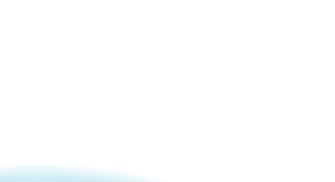




























Iam reading John Vaillant’s Fire Weather: The Making of a Beast in the parking lot of a medical facility in suburban Parksville, on Vancouver Island. Inside, my partner is getting a bone-density scan. It’s a routine procedure for women of a certain age, she assures me, and nothing to worry about. Yet I’m alarmed, and something to worry about is waiting just over the horizon.
Literally just over the horizon: looming above the low hills to the west is a pillar of grey smoke and ash, evidence of the Cameron Bluffs wildfire that has destroyed 229 hectares of forest and temporarily closed highway access to Port Alberni and the long beaches beyond.
This is June on the West Coast. We live in a rainforest. This should not be happening.
And yet overhead the sky is blue, the sun is hot, and the Cameron Bluffs fire is just one of dozens that have flared up across British Columbia, burning at a time of year that has historically been marked by moderate temperatures and copious rainfall. Something unprecedented is happening, and Vaillant is here to tell you why.
Fire Weather is nominally about one specific fire: the May 2016 conflagration that turned Alberta’s fossil-fuel epicentre, Fort McMurray, into hell on earth; that destroyed thousands of homes; and that burned unchecked by human efforts for almost three months before rain and cooler temperatures calmed its fury. More than 2500 times larger than the Cameron Bluffs fire, it smouldered on for more than a year before finally being declared over, and resulted in something like 4.7 billion dollars in insurance payouts.
The modern house —with its vinyl siding, vinyl flooring and kilndried framing timbers— is a collection of incendiary devices waiting to ignite; building thousands of these houses on postage-stamp-sized lots and then stuffing them with propane tanks and internalcombustion vehicles is … almost suicidal.
BY ALEXANDER VARTYThe first-hand accounts collected in Fire Weather are terrifying, as are the security-camera videos captured and saved on cellphone by fleeing residents.
“One in particular looks like it could have been shot by the director of The Blair Witch Project,” Vaillant reports.
“The fire is right there, right outside, bobbing this way and that, like it’s trying to see inside the room…. Suddenly, the fire punches through the second layer of glass, making the same sound and hole as a fist. There has been no three-dimensional intervention of any kind, only this vaporous, spectral presence, and yet it is battering its way into the room. This is what horror is—a malevolent entity from another dimension, breaking through to this one.”
The science behind the calamity is also the stuff of nightmares. Given the right conditions, wildfires can jump rivers, melt heavy machinery and turn tall conifers into flaming torches in a nanosecond. The forest conditions were right that Alberta spring: unusually dry air and high winds contributed to the disaster. “With the forest already primed to burn,” Vaillant explains, “a pyroCb [pyrocumulonimbus cloud], combined with wind-driven embers and lightning, changed this fire from a localized conflagration into a perpetual motion machine of destruction.” And once this machine
left the forest, conditions created by humans were even more propitious. The modern house—with its vinyl siding, vinyl flooring and kiln-dried framing timbers—is a collection of incendiary devices waiting to ignite; building thousands of these houses on postage-stamp-sized lots and then stuffing them with propane tanks and internal-combustion vehicles is, as Fort McMurray found out, almost suicidal.
“When a boreal fire is projecting thousand-degree heat and blizzards of burning embers into a recently built neighbourhood,” Vaillant says, “the houses stop being houses. They become, instead, petroleum vapour chambers.” Few materials are more flammable than petroleum vapour.
Even more terrifying, however, is Vaillant’s clear-eyed explanation of how the boreal forest—and the California redwoods, the Australian eucalyptus stands, even the Arctic tundra—came to burn. We did it, and there’s every reason to believe that we’ll keep doing it.
“Fire has no heart, no soul and no concern for the damage it does, or who it harms,” he writes. “Its focus is solely on sustaining itself and spreading as broadly as possible, wherever possible. In this way, fire resembles the unspoken priorities of most commercial industries, corporate boards and shareholders and, more broadly, the colonial impulse. It has taken decades, but the dissembling, distracting, gaslighting, bribery, bullying and outright lying perpetrated by the fossil fuel industry … is being exposed in ever harsher light.”
There are parallels here, in both structure and intent, with Vaillant’s earlier and highly recommended The Tiger: A True Story of Vengeance and Survival (Vintage, 2011). Both concern man’s inhumanity towards nature, the inevitable karmic consequences of human greed, and the scarifying beauty of a fearsome apex predator—and one of the great strengths of Fire Weather is its author’s ability to invest wildfire with life, character, even agency. He doesn’t anthropomorphize fire, but in an almost animist way treats it as an unknowable, unrulable elemental. The underlying message, of course, is that while fire’s power can surge beyond our control, we are in charge of whether we provoke it.
At the moment—as fire season 2023 has already proven—we persist on— we persist on adding fuel to the blaze. Even more than rising sea levels, multi-year droughts, flash floods and freakish storms, fire is already the visible face of the climate emergency in the industrialized world. Can we alter our ways? It’s doubtful, but this brave, angry, compassionate and elegantly argued book could well be a spark for change.
9780735273160
While the power of wildfires can surge beyond human control, we are in charge of whether we provoke it.Fire Weather: The Making of a Beast by John Vaillant (Knopf $38) ian hinkle photo John Vaillant will be appearing at both the Whistler Writers Festival (Oct. 12-16) and the Vancouver Writers Festival (Oct. 16-22, 2023).

Debbie Bateman
Eating too much, eating not enough, having sex, not having sex, aging parents, grief, drugs, childhood trauma, and the last call of ovaries — a woman’s body at mid-life can get messy.
“The kind of writer who can make you laugh out loud, grit your teeth in anger and struggle not to shed tears, all in the same story.”
CAROLINE WOODWARD, BC BookWorld
“A wonderful, fierce, and above all intelligent collection that grows in power with each succeeding story.”
SHARON BUTALA, author of Season of Fury and Wonder
Daniel Smeenk
An accessible and comprehensive look at autistic adults, written with an aim towards understanding and empathy.
Most research and writing about autism is focused on children, although most autistic people are adults. Smeenk addresses this gap by looking at how autistic adults present and see themselves and offers insights from an autistic writer. He provides information and practical advice to inspire neurotypicals to greater empathy and understanding of the autistic adults in their lives.

Tong Ge
A family saga set in China during the most tumultuous time of the twentieth century including the Japanese invasion, the civil war, and the Communist takeover.

“A sharp, epic and deeply felt debut from an intriguing and vital new voice in Canadian literature.”
ALI BRYAN, author of Coq and The Crow Valley Karaoke Championships
“This atmospheric story is gorgeous and brutal and grips from the very first sentence. A haunting and fascinating look into a time and place uncommonly experienced in Canadian literature.”
BRADLEY SOMER, author of Fishbowl and Extinction
Jaymie Heilman
Three teens set out to stop a pipeline, but their secrets, anxieties, and one very obnoxious ex-boyfriend might just explode their friendship first.
“As brave as it is thought-provoking and heartachingly real.”
CARRIE FIRESTONE, author of Dress Coded and The First Rule of Climate Club
“Chock-full of humour and compassion, this is a novel about becoming oneself through confronting one’s deepest fears and griefs, supported by the families we make for ourselves.”
LAURIE ADKIN, editor, First World Petro-Politics: The Political Ecology and Governance of Alberta
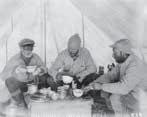


Trevor Marc Hughes
“Hughes delivers two adventure stories for the price of one. Two men, a naturalist and a mountaineer, offer the reader a visceral experience of the North and its mighty landscapes.” VANCOUVER SUN 978-1-55380-680-6 (PRINT) | 978-1-55380-681-3 (EBOOK)
6 x 9 | 268 pp | $24.95
Miners on BC’s Fraser River in 1858
Alexander Globe
The first book to reveal the 1858 mining milieu by those who witnessed it firsthand.
A B.C. BESTSELLER
“An extraordinary book” THE TYEE 978-1-55380-584-7 (PRINT) | 978-1-55380-585-4 (EBOOK)
6 x 9 | 350 pp | $26.95
Holocaust Literature of British Columbia

Alan Twigg
Winner of the George Ryga Award and nominated for a Western Canada Jewish Book Award.
“A celebration of 85 authors/survivors who have written about their harrowing and inspiring stories.” VANCOUVER SUN
(EBOOK)


The Hidden Zoo Inside You
An Illustrated Guide to Pesky


Organisms and Pandemics
Hand-written and drawn by Allen Sohrab Jones, MD Ages 12 to 99 | Pub Date Oct 15




“The content is surprisingly broad and detailed. The enlightening illustrations accompanied by ample humour make this volume much more interesting reading than cut and dried medical or scientific papers. It will definitely delight the lay public with any interest in these topics.”
Dr. A nthony W. Chow Professor of Infectious Diseases UBCBamfield Posh
A novel by Louis Druehl, author of Pacific Seaweeds and Cedar, Salmon and Weed a novel about Bamfield that was put on Allen Twigg’s literary map of BC.

Reluctant Jehovian war bride finds freedom from British elitism in a tumultuous Canadian fishing village.
Pub Date Oct 15
<< check out our books



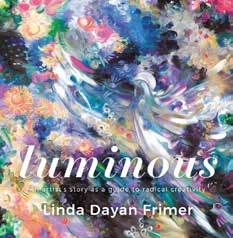
‘A detailed, heart-felt look inside the most notorious Christian sect to emerge from the spiritual counterculture of the 1970s.’
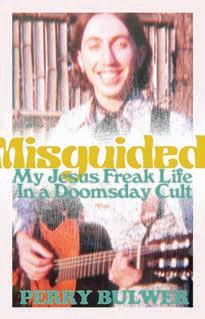
— Don Lattin, former religion writer at the San Francisco Chronicle and author of Jesus Freaks
‘A postlanguage, dramatological inferno of extreme poiesis in 5 acts... Tom Prime is at the forefront of a new generation of avant-gardists.’

— Daniel Y. Harris, author of The Posthuman Series


Eight categories including fiction, non-fiction, children’s, illustrated, poetry, regional, booksellers’ choice, and for writing that provokes.
To submit, visit bcyukonbookprizes.com Deadline December 1, 2023
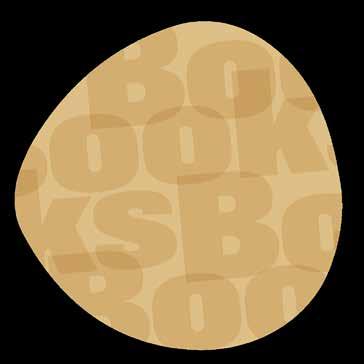
In his first collection of non-fiction, Vancouver-born poet and rabbi, Yosef Wosk shares his trip adventures, many of which are as much about internal journeys as geographical wanderings. The following is an abridged version of a longer memoir of time spent in Egypt that gives the book its title.
Naked in a Pyramid: Travels and Observations by Yosef Wosk (Anvil $22)
BY YOSEF WOSKThe Great Pyramid of Giza, with its neighbouring Sphinx, is the only Wonder of the Ancient World that still exists. It was the earth’s tallest man-made structure for almost 4,000 years.
Initially, I entered the once-hidden core of the Great Pyramid with a group of tourists, as was customary, to access both the Queen’s and the King’s chambers. Hours later, with the help of bakshish and a long-shirted gallibaya -garbed guide named Ibrahim, I illegally climbed the Great Pyramid after midnight.
The vertical height of the Great Pyramid is 449 feet, roughly equivalent to a 45-storey building if measured vertically, but the extended slant height of each face is 610 feet. Perched on the outer shell of the greatest building of antiquity, under the hypnotic gaze of
a full moon, I found myself ascending from the desert floor at a precipitous 51.5º angle of incline.
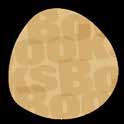

It was much more harrowing than anticipated. Half-way up I became petrified, feeling I could neither continue the climb nor descend to terra firma below. I desperately projected that the only way I could be rescued from the man-made mountain was if a helicopter lowered a rope and lifted me to safety. Seduced by the siren song of gravity’s ghost and with desert winds urging me to let go, I contemplated suicide, not out of depression but with a dramatic leap into what I imagined to be a transcendent realm of eternal peace.
Saved by a sudden vision of the future, I barely managed to restrain myself from stepping into the abyss of certain doom. Still trembling, I closed my eyes, caught my breath, turned to the Great Mother and embraced her massive bones.
I share these sensations with you reluctantly even now, wary of reigniting the trauma. I felt I was willing to sacrifice everything—to die to my limited self, to become a martyr to soul-searching.
I was young and foolish enough— about 35 years old—that I still wanted to accomplish the audacious feat of reaching the summit. With my guide Ibrahim’s assistance, I continued for another frightening hour or two of slow climbing. When I finally arrived at the top of the pyramid, I discovered that it had lost its cap and a few layers of stone. The structure is about thirty feet shorter than when it was originally built 4,500 years ago.

Lured by the notion of wisdom, Yosef Wosk travels the world.Yosef Wosk illuminated by the sun’s rays. photo


The flat area at the crown is about thirty feet in each direction. When I reached it, I was surprised to find that two other explorers who had climbed the pyramid that night were sleeping up there. As I surveyed the rare and magnificent 360º view of the vast moon-lit desert, a gentle ecstasy coursed through my body. I was drunk with danger and exhausted with having grappled with mortality. It was, however, not yet time to fully relax.
I wanted to remain there forever but after about fifteen minutes we decided to return. I was concerned that I might be discovered and arrested by the Egyptian police for trespassing on a heritage monument and endangering life—my own. The descent took about an hour, my body carefully hugging each block before dropping onto the ledge of the one below.
It was about 5 a.m. when I sunk to the ground and kissed it with a profound sense of accomplishment mixed with having been delivered from imminent death. As it turned out, this was just a prelude to an equally memorable experience….
With special permission from the Ministry of State for Antiquities, I reentered the Great Pyramid the following day with a small group of foreign visitors and stumbled cautiously, backwards, down a narrow, low, dim, claustrophobic-inducing shaft leading to mysterious chambers beneath the pyramid.
Only a few carried flashlights to illuminate the diagonal passageway for the others. The carved rock slanted corridor was not tall enough to stand up in so we had to remain crouched. Most of the time we lowered ourselves slowly on our hands and knees or upon our bellies.
When some were suddenly struck with claustrophobic panic attacks and needed to escape to the surface, they had to wait for others to pause in somewhat larger crevices where two people could hardly pass with some difficulty.
The air was dank and stale. Sound was muted. We navigated by touch and trust more than by sight or logic. Then another fear crept in: perhaps the 2,300,000 blocks of stone weighing some 6,500,000 tons, and stacked directly overhead, might collapse upon us. Apprehensive, a couple more adventurers withdrew from the crypt, scrambled up the confined tunnel and quickly exited through the guarded exterior gate.
The deeper we descended, the thinner the oxygen became, and the more one felt prone to hallucinations.
After about twenty minutes of inching down the narrow passageway, we arrived at what seemed like two large subterranean caverns with high ceilings and a series of sub-caves. We were a hundred feet beneath the pyramid.
The King’s Chamber was concealed higher up within the pyramid so possibly these chambers were originally intended to be the pharaoh’s final resting place.
Letting the others proceed, I chose a secluded corner of one of the roughhewn caverns and—in the dark, bereft of cover, and yet buried deep beneath the earth—I removed my clothes.
Having abandoned the trappings of civilization and perceiving nothing but an ethereal cradle of Pure Essence, I emptied my mind and contemplated existence.
In the belly of the beast, I performed one more unthinkable act. No, not that, although I imagine that over the centuries more than one expression of endless blind passion had been consummated in the chasmic womb of Egypt.
In a small backpack, I had a bottle of water and my tefillin (phylacteries), small leather boxes containing Hebrew texts, Jewish prayer amulets inscribed with words from the Torah. I placed one of them around my head—something that helped to activate my crown chakra. The second one was wrapped seven times around my left arm as a sign of aligning physical action with spiritual forces.
It might have been the only time in history this was done in a pyramid— certainly by a man as naked as Adam. This private ceremony connected me to the heritage of my birth tradition as a member of the tribe of Levi, and to the Exodus from the very civilization that built this extraordinary structure. I also felt a direct link to Abraham and Sarah who emerged from Mesopotamia almost 4,800 years previously.
Knowing that I might be underground for a relatively short time, and cloaked in an atmosphere of palpable fear, I focused on meditative imagery, using the power of the pyramid directly overhead to amplify its effects. I allowed my mind to wander into the heart of heaven, there to engage the Infinite, the All and the No Thing.
I was simultaneously vibrant like never before and extinguished as never again. Opinions, beliefs and directions melted away; history was both fulfilled and erased; the personal gave way to the universal.
An hour later, upon emerging from the netherworld into fresh air and warm sunlight, fully clothed and overflowing with gratitude, I felt reborn, wrung from the birth canal all over again.
Like the classic Fool in the Tarot with his knapsack on a pole, divorced from his family and safety, I have often set off, leaving the nest of propriety and security, lured by the notion of wisdom. This was one such pilgrimage, a remnant of treasured memories scattered by the dance of forgotten time.
9781772142204
The deeper we descended, the thinner the oxygen became, and the more one felt prone to hallucinations.”


In his comprehensive collection of memories and historical context, covering 85 authors and 160 books from British Columbia, Alan Twigg conveys with raw power the stories of survivors and firsthand witnesses of the Holocaust. In its commitment to antisemitism, this book presents many perspectives that serve to show the wide scope of the Holocaust and its impact across many parts of the world. Twigg has since built a website about one of the Holocaust survivors, Vancouverite Rudolf Vrba: www.rudolfvrba.com
Beyond Rights: The Nisga’a Final Agreement and the Challenges of Modern Treaty Relationships (UBC Press) by Carole Blackburn
Cambium Blue: A Novel (Harbour Publishing) by Maureen Brownlee
The Punishment: Poems (Nightwood Editions) by Joseph Dandurand

This is Assisted Dying: A Doctor’s Story of Empowering Patients at the End of Life (Simon & Schuster) by Stefanie Green
Judges for the George Ryga Award were author and poet Trevor Carolan, retired librarian Jane Curry and BC BookWorld publisher Beverly Cramp.
With the sponsorship of Yosef Wosk, VPL and Pacific BookWorld News Society, the annual George Ryga Award is given to a BC writer who has achieved an outstanding degree of social awareness in a new book published in the preceding calendar year.

Randomly flipping through Rubymusic , journalist and broadcaster
Connie Kuhns’ “popular history of women’s music and culture,” can be a disconcerting experience. So let’s try it, why don’t we?
Here on page 108, we have “Quietly Christian Pop: Amy Grant’s Spiritual Songs Reach Out to a Secular Audience,” a 1988 Q&A from the Georgia Straight weekly in which Kuhns does a great job of getting the crossover star to open up about her faith, the African American influences on her music, and the cognitive dissonance of being both a Christian and a “big, bull-headed” American. Kuhns asks smart questions, and Grant gives smart answers, and this reader is left feeling that maybe he was wrong to so thoroughly ignore Grant during her 1980s heyday. Inspiring curiosity: it’s one of the hallmarks of good non-fiction.

Dropping in again at page 36, there’s “There Is a Wind That Never Dies: The Life of Yoko Ono,” which by rights should be something completely different, but isn’t. Published in Geist in 2019, this longer-form essay dispels some of the racist and sexist myths about a pioneering multimedia artist whose musical endeavours couldn’t be less like Grant’s, but which might stem from similar roots. Grant may believe in an all-powerful sky god and Ono in a perhaps Shinto-inspired pantheism, but both are coming from a place of faith—all the more remarkable, and inspiring in Ono’s case, in that the Japanese artist has lived through personal horrors ranging from the firebombing of her native Tokyo in 1945 to the murder of her husband in 1980. A particularly revelatory passage in Kuhns’ essay describes Ono’s 2012 Remember Us, a sculptural installation that also incorporates elements of ritual, social criticism, and Zen koan; like much of Ono’s work, it’s a seemingly simple concept that can produce a complex transformation in those who take the time to consider it.
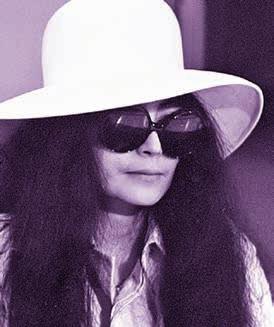
self,” an interview with folk-music influencer and former Slocan Valley resident Ronnie Gilbert, culled from the pages of the feminist arts journal Kinesis in 1985. A founding member, along with Pete Seeger, of the 1950s folk group the Weavers, Gilbert was just then enjoying a revival of interest in her work sparked by her collaboration with women’s music pioneer Holly Near. Again, Kuhns shows herself to be a sensitive and wellprepared interviewer who brings out the best in an articulate and impassioned subject.
Elsewhere in Rubymusic we have an “as told to” oral history of women in Vancouver’s punk and alternative-music scene, including a “family tree” of all-women or woman-centric bands active between 1977 and 1988.

(One error: it’s Tin Twist, not Twin Twist, but I only caught that because I own a copy of the short-lived quartet’s sole release, a three-song EP on the co-operative MoDaMu label.)
There are profiles of artists who have since become near-legends (Ferron, k.d. lang) and others who have lapsed into obscurity, whether self-willed or record-company induced (Emily Faryna, Terilyn Ryan). There are concert reviews, liner notes, a mildly incongruous interview with Gloria Steinem in which music is barely mentioned, and, inevitably, obituaries. And there are a couple of forays into autobiography, detailing Kuhns’ past as an aspiring songwriter, Vancouver Co-op Radio host (her Rubymusic Radio program that ran for 15 years gives the book its title), mother, folk-festival presenter and all-round women’s music activist.



doesn’t provide is what its cover promises: the aforementioned “popular history of women’s music and culture.”
Whether that’s an opportunity lost is up for debate. The book that Rubymusic isn’t would be a much more labour-intensive project than this subjective and somewhat haphazard dip into Kuhns’ archives, and probably the only way to get it funded would be to do it as a doctoral thesis. Another approach, at least in terms of addressing the under-recorded Vancouver women’s music scene, might be to start with the music itself and work out from there. A Native North America–like collection of rare and unreleased recordings accompanied by an expanded version of Kuhns’ Geist essay “Strange Women,” included here, would be a historian’s delight, as well as an illuminating companion to this volume. (A website might be the way to go, though, with such a project.)
Let’s conclude with what Rubymusic is, though, rather than what it isn’t. It’s a good survey of North American feminist music-making in the late 20th and early 21st centuries, evenly divided between acknowledged stars and tireless activists. It’s a useful guide to a vibrant musical community that was so far underground that even the Vancouver underground mostly ignored it. It’s a fine homage to women, like cover star Ellen McIlwaine, who lived full lives on their own terms. And it’s a worthwhile read, although perhaps too random to peruse from cover to cover.
9781773861012
Scoping out page 183, there’s “True to Her-
This is all well and good, and the sections that deal with feminist underground music in Vancouver are especially welcome insofar as they provide an alternative to the louche tales of hardcore punk-rock decadence that have generally been the norm. But what Rubymusic
A rich time capsule of women’s music-making that includes k.d. lang, Ferron, Yoko Ono, Vancouver’s punk and alternative underground scene, and beyond.Rubymusic: A Popular History of Women’s Music and Culture by Connie Kuhns (Caitlin Press $26) Alexander Varty is a veteran West Coast arts journalist living on unceded Snuneymuxw territory.










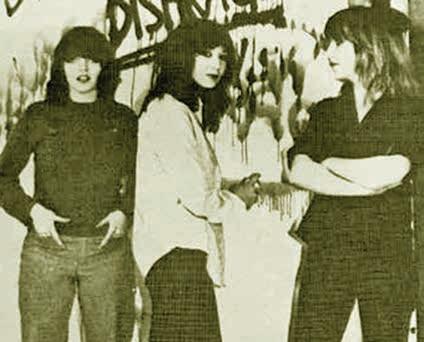










This debut collection of short stories by SFU Writer’s Studio grad Debbie Bateman is described by threetime Governor General’s Award nominee author Sharon Butala as a “wonderful, fierce, and above all intelligent collection that grows in power with each succeeding story.” To which I will add, it is a rare and gratifying event to read fiction that does not hold back about the truths of being in a woman’s body, especially an aging woman’s fed-up and out-ofshape temple of the soul.
We meet Pauline in the first story and understand she is now fleeing her marital home, the first occasion being many decades earlier when she was a violated, furious teenager. Now she is a seething, and still furious, menopausal woman wracked with cramps, bleeding non-stop for weeks, alternating between sudden chills and hot flashes, her body image at an all-time low. Bateman deploys a grimly hilarious sense of humour and the reader is primed for mishaps involving mind and body when an astute friend recommends a yoga challenge class: “‘Listen to your body,’ says their instructor… her voice is soothing. She steps precisely onto the centre of her mat, and Pauline’s throat coats with an afterwash of anxiety.”
For years Pauline has put up with her hypercritical husband, Oliver, a successful accountant with high blood pressure, so we immediately understand how the very sight of such precise movement triggers Pauline. Bateman’s narrative voice is wonderfully energetic, replete with vivid and pungent images. Some sentences snap with tension, others roll out luxuriously, each one essential to the rhythm of the story unfolding. She takes an unflinching look at what our bodies get up to when our minds are riddled with conflicts, major and minor.
There are zingers, those sentences that contain a wallop of wit and wisdom, stopping us in our tracks in every story. Here’s Brianne emerging with forceps clamped to her skull as a 1950s newborn in the title story: “Everything was out of proportion, not the least of which, her potential. She contained two million eggs, her lifetime quota, or so the world believed at the time. Later, the notion that females couldn’t generate new eggs proved false, but by then the damage had been done. Brianne and other girls like her learned their most essential purpose was to guard an ever-dwindling stash and hope one day a smooth, pure egg hatches a new neckless creature yowling at the open air. ‘It’s a girl,’ said the doctor. Sloppy with anesthetic, Brianne’s mother smiled.”
Or this one, from Hanna in rehab, in “The Love Drug”: “Truth is better served to those whose mouth is already familiar with the taste of lies. People like me who’ve fallen from grace, not
stuff themselves with junk food and then do battle at the gym with their obesity. One woman decides to stop her downward spiral into prescription drug abuse and checks into her first rehab clinic. Her son suffers through her relapses and loathes her lies. The pain and joy of first love, of childbirth, of adultery, of living with a complete lack of desire or of desire gratefully revived from long-dormancy are revealed.
So are the intimacies, both ugly and glorious, of her people, young or old or middle-aged, gay or straight. We recognize the emotional truth in these stories about women making decisions to have children, or not, or to refuse implants or any form of prostheses after a radical mastectomy.
It is especially gratifying to encounter one or more of her characters, her fully realized 3-D people, in another story told from yet another character’s point of view. “Crossing the Line” is a most satisfying story precisely because Bateman creates strong, struggling characters we’ve come to care about and cheer onward. In this story three of them converge, all training for a marathon run! Perfect metaphor.
“Sundowning,” the final story in the collection, shows the way to resolving some of the lifelong issues affecting Pauline, whom we met in the first story, “Secret Workings,” as she was hauling a massive suitcase down the stairs of her immaculate showcase home. It’s a heartbreaker.
those who are faithful and kind.” Likewise, one woman discovers the sadly familiar fact that one gym buddy likes her better when she’s fat, when she’s the one failing at goals that they both aim for in life. This ill-fated and highly conditional friendship is based on a superficial connection that is all about superfluous flesh.
Debbie Bateman is the kind of writer
who can make you laugh out loud, grit your teeth in anger, and struggle not to shed tears—all in the same story. Her fictional women and men reflect reality, our best and worst emotions about our physical selves; squeamish, prudish, fearful, wounded, repulsed, proud, desirous, celebratory. These people experience betrayals, and they do the betraying too. Some of them
We simply do not often read stories in contemporary literature with as much gritty depth and maturity as these by Debbie Bateman. When tackling marital ultimatums, say, or the profound impact of parental cowardice, this writer delivers with visceral honesty and a seemingly innate sense of pacing and diction. We readers are in the hands of a highly skilled writer, one who has served a long apprenticeship to debut with a collection as accomplished as this one. Brava!
9781553806929
Debbie Bateman is the mother of three sons who lives with her husband and soul-mate in the Cowichan Valley on Vancouver Island. Reviewer Caroline Woodward is the mother of one son who lives with her husband and soul-mate in beautiful New Denver, BC.
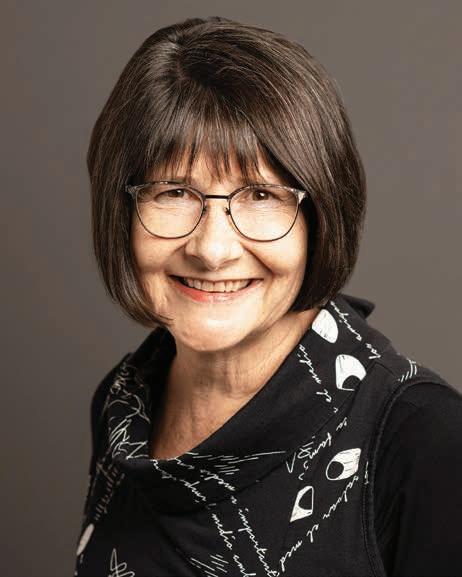
“
“[Debbie Bateman] takes an unflinching look at what our bodies get up to when our minds are riddled with conflicts, major and minor.”
— caroline woodward
Debbie Bateman can make you laugh out loud, grit your teeth in anger, and struggle not to shed tears—all in the same story.Debbie Bateman: “Women over fifty are a significant force in the world, and we know middle-age can be as life-shifting as adolescence.” BY JOHN MOORE
In his fourth Dave Wakeland novel, New Westminster author Sam Wiebe once again proves that eulogies for the hard-boiled private eye are premature. On the strength of his previous Wakeland novels, Invisible Dead (Random House, 2016), Cut You Down (Random House, 2018) and Hell and Gone (Harbour, 2021), he’s been credited with resurrecting the genre epitomized by American 1930-40s crime fiction icons Dashiell Hammett and Raymond Chandler. In the more restrictive legal and cultural environment of contemporary Canada, this is no mere party trick.
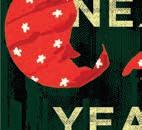
In Sunset and Jericho , Wiebe shows he learned more from the masters than snappy dialogue and an ironic narrative point of view projected by a cynical idealist whose career choice perversely “enables” his personal flaws. Dave Wakeland might benefit from a few sessions with Vancouver behavioural psychologist Dr. Annick Boudreau, Charles Demers’ fictional amateur detective in Primary Obsessions (D&M, 2020) and Noonday Dark (D&M, 2022). Maybe Wiebe and Demers will collaborate on a series “cross-over” here with Dr. Boudreau treating Wakeland for depression while they work on a case together... but I digress.
Wiebe borrows Chandler’s go-to plot device, used in The Big Sleep (1939) and The Long Goodbye (1953) lifted straight from the generic source, Conan Doyle ’s Sherlock Holmes: point the stink-finger at “respectable” wealthy and powerful clients who hire private investigators because they’re being blackmailed or extorted by more extreme means like kidnapping and want some jaded moral janitor to mop up the mess their odious actions have made without damaging their public image. Their sense of entitlement, of being “above the law,” makes the hoods and gangsters of crime fiction seem like regular guys. In Sunset and Jericho, Wakeland is tasked with finding the Mayor of Vancouver’s wastrel “wasting



away in Margaritaville” younger brother, who has mysteriously disappeared.
Part of Wiebe’s success in “bringing Raymond Chandler into the 21st century” is achieved by not making Wakeland some shady shamus working out of a seedy office on the Downtown Eastside. These days, no PI working solo could make the rent on the cheapest flea-trap in Vancouver. Wakeland is realistically partnered in a private security firm whose core business is providing security guards for corporate properties and construction sites. Only senior partners, mainly Wakeland, undertake private investigations. The firm’s size, local presence and connections explains why the Mayor would contact them to discreetly find her errant brother rather than the Vancouver Police Department.
In true Chandler fashion, Wake-
FALL 2023
NON-FICTION
Christmas is trumpeted as a time of peace, joy, bounty and goodwill. Believers and non-believers alike covet the spirit of the holidays even when their circumstances are screwed up.
Recollections from acclaimed Canadian authors combine with emerging voices from across the country in an anthology that debunks the popular depiction of Christmas while delivering its messages of hope and renewal.

$ 22.95 ISBN 978-1-990160-27-1

Order from: UTP Distribution utpbooks@utpress.utoronto.ca
land’s half-hearted sleuthing on a job he regards as doing a local politician’s soiled laundry sucks him into a labyrinthine plot that gets deeper, darker and fouler at every turn. Random events like the near blinding of a Transit Police officer with “jailhouse napalm” (boiling sugar water) and theft of her pistol, the appearance of strange new graffiti tags in the city and two murders eventually lead Wakeland to a group of social justice warriors turned terrorists whose real target is a local high-profile property developer. Set in a city where homelessness and the inflated cost of housing are problems soaring out of control, Sunset and Jericho hits the “hot button” with a bulls-eye.
Wiebe’s plotting is superb: he’s a master of the twist-on-the-twist. The reader’s brain feels like a soft pretzel during the final chapters. Film direc-
FALL 2023 FICTION
tors should be waving options at him if they aren’t already.
FALL 2023 FICTION
Bringing the emotionally hardened private eye into the 21st century milieu of political correctness and cancel culture is a tall order. Jim Christy solved the problem by setting his trilogy of Eugene Castle noir novels, Shanghai Alley, Princess and Gore, and Terminal Avenue (Ekstasis), in the Vancouver of the 1930s and early 40s, when men were hard-boiled, women were overeasy and you could pick up a pistol for a double sawbuck at any pawn shop. Like Christy, Wiebe has had to dance the tango in a minefield, since the writers and genre characters he admires, Chandler especially, frequently used misogynist, homophobic and racist slurs in the dialogue and narrative of their works. That Sam Wiebe manages to do homage to Hammett’s Sam Spade and Chandler’s Philip Marlowe without turning Dave Wakeland into an anachronistic parody is nothing short of a literary tour-de-force.
9781990776236
John Moore has written three novels, a poetry collection, and most recently Rain City: Vancouver Essays (Anvil Press). He lives in Garibaldi Highlands.

Eva’s dad is dead. Her mother isn’t, but ought to be, at least according to Aunt Mathilde.
Time to move on . . .
Bound by blood and loss, three women struggle with relationships fractured by a decade-old tragedy.
$ 22.95
ISBN 978-1-990160-22-6
Mel is an aspiring journalist determined to make it to the front during the Great War. Too bad she’s a woman.
A modern woman of the new twentieth century, Mary Ellen McLeod’s career as a reporter is shaped by the pioneering female writer, Kit Coleman.
$ 22.95 ISBN 978-1-990160-18-9



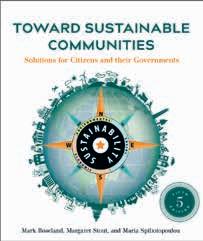









Jigsaw
A Puzzle in Ninety-Three Pieces

M.A.C. Farrant
Celebrated humorist and short-story writer M.A.C. Farrant’s new work comprises ninety-threepuzzle pieces that mimic the actual practice of assembling a jigsaw puzzle.
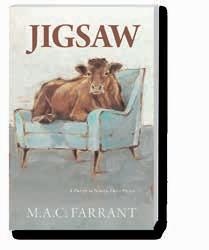
978-1-77201-543-0; Fiction
Forthcoming Oct 17, 2023

Bringing the Tŝilhqot’in Title Case Home
Lorraine Weir
Chief Roger William
A community oral history of Tsilhqot’in Nation v. British Columbia, the first case in Canada to result in a declaration of Aboriginal Rights and Title to a specific piece of land.
978-1-77201-382-5; Non-fiction


Forthcoming Sept 3, 2023

The Complete Paintings and Collages of Phyllis Webb

Edited by Stephen Collis
Seventy-four paintings and eighty photocollages by the brilliant poet Phyllis Webb. Introductions by Stephen Collis and art historian and curator Laurie White, as well some of Webb’s own reflections on her visual work, and an essay by Betsy Warland. Paperback 978-1-77201-433-4 Hardcover 978-1-77201-474-7 Non-fiction; Now Available

andrea bennett
the berry takes the shape of the bloom originated as a gesture towards optimism after loss and pain, difficulty and fear. These poems, which capture particular moments in time, may recur in any given present: sometimes what surfaces is anxiety or anger, sometimes love or eagerness.

978-1-77201-551-5 Poetry
Forthcoming August 29, 2023
“In the Slender Margin is intended as an exploration rather than a balm or solace, though it will no doubt be those things for some people. Its resonance comes, rather, from its intelligent open-endedness, its unflinching, simultaneous embrace of death’s reality and persistent mystery.”

— Globe and Mail
Me M oir | 212 pages | $22
“Sarah Gilbert writes of an old neighbourhood that is disappearing and being born anew. Her stories are as vibrant and intimate as drinking a cup of coffee on a stoop while gossiping with a neighbour in their housecoat.”

— Heather O’Neill, author of When We Lost Their Heads s tories | 208 pages | $20
Viewing the world through the lens of psychogeography, Yosef Wosk’s deeply inquiring mind takes us on trips to both poles, the Great Pyramid of Giza, and many places in between.

p sychogeography | 250 pages | $22
Real Enough tells the story of the Vancouver band, Doug & the Slugs. From bar band to gold record holders, the Slugs garnered a loyal fan base, charming audiences from Vancouver to New York. Illustrated.
biography | 200 pages | $25

“Distinctly urban, with a twist!”
In her previous novel, The Heaviness of Things That Float (D&M, 2016), Jennifer Manuel set her work in the fictional, isolated community of Tawakin on Vancouver Island’s northwest coast, an awkward distance by sea or air from Port Hardy. Those familiar with her acclaimed first work will recognize some of the characters and the same rugged land- and seascapes in this new book, The Morning Bell Brings the Broken Hearted, set chronologically a little earlier.

Once again, there’s a mystery involved and Manuel’s observant eye evokes details drawn from her own time as a schoolteacher working among the Nuu-chah-nulth. Indigenous customs, anecdotes and myth are depicted with nuanced regard for the protocols of sharing First Nations imagery from life along the coast. We’ve got a storyteller in control of her materials.
Foregrounding all this is Tawakin’s Indigenous differentness. Entering into the story is the novel’s 39-year-old schoolteacher protagonist from suburban Vancouver, Molleigh Royston. From the inclusion of Nuu-chah-nulth language phrasings that one receives during childhood, to the intimidating darkness of the omnipresent forest surrounding her, life as a teacher among the hundred souls of this fishing village, Molleigh intuits, also obliges being a learner.
In post-colonial times, any work by a non-Indigenous author addressing or portraying First Nations peoples and their cultures is bound to receive a critical eye. Yet, if we look beyond kneejerk dissonance to a deeper understanding of BC’s colonial legacy and its manifold hurts, we’re likely to find messages of significance in this quintessentially West Coast story. There will be pain, yes, often the legacy of a grim colonial history; yet readers can expect authentic portraits of real communal joy as well, especially among the women and elders of Tawakin, and of an everyday resilience in the face of marginal economic circumstances.
Molleigh has been there just over a month. She has seen a seven-year marriage collapse and her prior artistic career fail to ignite. Her possessions are a scattering of cardboard boxes. Teaching, she admits, was “a late career choice.” In Indigenous communities like Tawakin, she realizes, it means “being on call twenty-four hours a day.” Chase Charlie, a roustabout character from Manuel’s earlier novel, expresses it from his point of view, “Teachers always leave, will you stay?”
Borrowing from her earlier novel, Manuel categorizes outsiders who work on the Reserve as either “Users, Runners, or Saviours”—some already leap-frogging into better positions elsewhere; others wanting to escape their old life; some that yearn to feel good about “saving” First Nations people. Molleigh briefly considers whether she might be a little of all three. Beset by doubts in an unfamiliar environment rich in secrets, her test is to imagine what actually belonging to a place like Tawakin could involve. Teaching there means “trying to figure how to out-teach the broken lines, the frowns, the fears.” Unaccountably, she’s also nervous about
the forest surrounding her. She imagines returning to the city.
Challenges begin when Molleigh is faced with a menacing, possibly neurodivergent student, Hannah, whose pit-bull mother fends off any attempt at a medical evaluation. It’s an uneasy stalemate. For relief, Molleigh sketches portraits of her students that she hopes might inspire them someday to ideas beyond a life of fishing and logging.
Meanwhile, Mr. Chapman, the school principal and another new -
comer, thinks that he brings hope. He jokes with students and believes people become the stories they hear.
Experienced in Northern BC education, Chapman has a proprietary air with a biblically cadenced speaking style. Yet his personal life remains closed.
When an unsettling story arises about a nearby island that children are not allowed to visit, inevitably Molleigh is drawn into a taboo-breaking mission there. Manuel’s basic elements are now in play. Weird things happen, and Molleigh clicks in and out of an old, disturbing memory. There’s an intimation of possible sexual abuse, never specific, but a lingering suspicion. At a gathering, an elder with inner-seeing ability explains things, declaring there’s bad energy present, “dark … sharp as broken glass.”
It’s not for reviews to retell the story. Manuel’s prose kicks into overdrive with her accounts of typical daily incidents at Tawakin that are genuinely enlightening—a spooky tale for kids about The Basket Lady; the way an isolated community rallies in an emergency; how a schoolteacher learns from a pupil why children’s stories are make-believe, “Because they make you believe.” Then, after sorrow, there’s a traditional shell-gathering expedition where Molleigh connects with the village women, finding joy within their sadness—an event that leaves her questioning how she’d survive in any other place “where there is no marveling, no celebrating, no sharing.” And finally, there’s a shared secret and an answer; with problems like Hannah, how does a wavering teacher find a way to stay?
Good mysteries need false leads. Within an atmosphere permeated with myth and Indigeneity, Molleigh encounters her share. There’s the reality of unresolved trauma that can torment like a night-cramp. There’s a necessary cleansing (brought about because Molleigh does something inappropriate) that some may find believable and confusing. Credible endings often need a villain and a means of knotting things back together, but not everything follows that maxim in this tale; there’s deep beauty and a waft of “feel-good” too, that some may find a bit too easy. Yet equilibrium is bound to follow stormy weather. Reconciliation between people is like that, it’s a wind that has to trade both ways if it’s to succeed. But we’re in Tawakin here; sometimes what you find will not be what you were seeking; sometimes, what you will find cannot be sought.
9781771623193
Poet and author Trevor Carolan was a professor of English at University of the Fraser Valley for many years.



With her third book, Wanda John-Kehewin plays with form, language, meaning and words in Spells, Wishes, and the Talking Dead
Like a memory box, it yields a rich jumbled trove: verse, prose, family photos and art. Yet this book was not written merely to illustrate a life in all its richness, even if that is a benefit for the attentive reader. Its intentions are deadly serious: to take back the author’s life and reclaim her traditional language through rewriting, reappraisal and outright sabotage. The threads that stitch these lines, paragraphs and stanzas together are made of gut: a gut steeped in mother’s blood and cured with a daughter’s tears.
The subjects of Spells’ poems include John-Kehewin’s Indigenous Cree identity, her childhood, motherhood, relationships to her family, lovers, friends, Catholicism, intergenerational trauma, COVID-19 experiences and the past to which she is deeply connected by blood if not experience. Despite the intensely personal nature of the events recollected and chronicled in these verses, there are strategies in this book that invite the reader into the poet’s experience. A timeline at the beginning of the book reminded me, in a completely different context, of that cast of characters one finds at the beginning of a classic detective novel, hoping vainly to figure out who the killer is before even reading the first page.
Including this timeline was a wise choice. Studying it helps the reader to figure out who the killer is before even reading the first poem. It’s colonialism. It also situates John-Kehewin’s experience within this history that reverberates through the book.
The repeated poem “ᐁᒋᑫ ᐃᐧᔭᓯᐁᐧᐃᐧᐣ” is simple and devastating. A roll call and death knell, it describes the fates of John-Kehewin’s family, both biological and chosen. Each person’s epitaph is allotted a single, spare line.

The first iteration of the poem uses
nêhiyawêwin (Cree) syllabics for its title and to refer to each person at the beginning of a line: aunt, friend, grandmother. Each line begins with that relationship, then slips into English to chronicle the person’s fate. The non-Cree-speaking reader, crossreferencing with the helpful glossary at the back of the book, only gradually absorbs the poem’s cumulative impact: “…drank herself gone… died with a bottle.”
Encountering Cree words not just transliterated into English but in the original syllabics is an interesting reading experience. Just as John-Kehewin struggles with the much larger issue of reconnecting with her Cree heritage after generations of trauma and displacement, the reader experiences the much more minor struggle of being very partially displaced from the centre of things, reading not solely in English (John-Kehewin’s first language, and this reviewer’s only one) but also in Cree, rendered both in syllabic form and in English letters. As the poet notes at the beginning of the glossary, “I was angry in English, writing about colonialism, and even angrier that I could not express that anger in ᓀᐦᐃᔭᐍᐏᐣ nêhiyawêwin.”
A second version of the same poem, ten pages later, uses Cree rendered into English lettering to delineate the relationships that herald each line: nohkom (an older form of the current “kokum,” grandmother), nitôtêm, (friend), and niya (the first-person poet). Again, repeated reference to the glossary reinforces the reader’s sense of mild displacement. The poet’s deliberate use of Cree underlines how, just as the non-Cree-speaking reader has to look up the meaning of unfamiliar words, the English tongue distances John-Kehewin from her own cultural history.
The third version of the same poem is written entirely in English. It shifts from first to third person in the poem’s final lines: “Me witness and survivor // She tells a story – .” The line break, with its suggestion of continuation, mimics the turn where the poet, from being a “witness and survivor,” transforms herself. No longer simply one who suffers, she now begins to speak.
The poem, “Probably Politics,” suggests that all of this suffering, all of these varied catastrophic reactions to trauma of one’s own, as well as others’
history, are not individual but actually systemic.
This book depicts the painful grappling of a single individual with the overwhelming weight of societal racism and colonization’s ongoing effects. The bravery of this collection is that it does not tie things up with a neat bow, but rather it maintains focus on the devastating process of coming to terms with that crushing reality.

Owanda john - kehewin unflinchingly faces her own failures and successes as a mother whose children were lost to the foster care system for years. Heartbreakingly, once her third child learns at the age of six about the legacy of residential school, the child lives in terror of being taken herself. Her daughter only begins to feel safe during her extended time at home with her mother during the pandemic lockdown. How long does it take? Two full years.
Not that these poems are uniformly sombre. Humour is much in evidence, as when John-Kehewin records, amusingly, the girl’s lockdown cajoling in “Isolation with an Eight-Year-Old”:
Mom! Mom! Mom!
Come play with me!
You have to play
With Me!
You’re my mom!
Mothers of every stripe, but especially those who have tried to write
Musings on Mining, Family, Latin America & Society
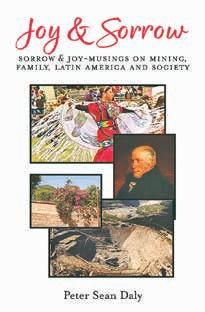
Playful, jubilant, calm and wise — Peter Sean Daly’s poems describe the quiet heroism of everyday labourers from Vancouver to the El Mochito Mine in Honduras.
Sean
We are now reading Alan Twigg’s Holocaust book –Out of Hiding – telling important truths.
in the midst of parenthood, will smile and perhaps wince, recognizing the child’s unavailing attempts to turn her mother’s attention from the poem back to her.
Tragedy is never far from these pages, however. An essay in the middle of the book, “Heartbeat of the Drum Calls Us Home—Not Everyone Hears It” is an extended description of, and discussion with, a fellow mother who bolstered John-Kehewin during her first faltering years as a parent; who John-Kehewin thought lost but who resurfaces with her own child, now grown, to reminisce about early parenting years.
There is an easiness to this essay that provides a resting space amidst the justified urgency of the poems. Yet the lessons here also reverberate with the experiences John-Kehewin shares elsewhere. Her friend tells the story of how she took her young son to a powwow, where he excitedly demanded to dance. Not knowing the protocol, the mother floundered. Like John-Kehewin, she was raised not by her own relations, but in foster care, so her connection to her cultural heritage has to be remade through her own determination. But like the poet, she has come through and out the other side, proclaiming—as does this collection in myriad ways—“It’s a good day to be Indian.”

9781772015126
Carellin Brooks’ fifth book and first book of poetry, Learned, was published in November by Book*hug Press. She has a PhD from Oxford University.

$34.95



Four teens uncover an oil magnate’s misrepresentation of scientific recommendations at a conference in Pender Harbour, on B.C.’s coast. Corporate profits overrule climate mitigation. He must be stopped! But how?



Readers will learn of corruption in high places. Pender Harbour’s Secret Agents and two subsequent books (Secret Agents’ Dutch Treat and Secret Agents


Defang a Dragon) suggest ways to counter such fraudulence with imagination, courage, and ingenuity.
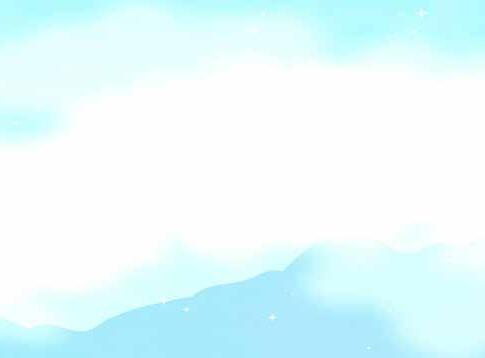



All three Secret Agent stories are available across Canada through Red Tuque Books: www.redtuquebooks.com

Suggested retail price $19.95















The reader is in for a treat with this novel that combines magic, secret identities, new friends, disability struggles, hidden ability empowerment, and learning to accept yourself and your friends for who they are.
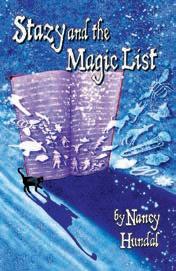
I’m sure I’m not alone in saying that as a child, I dreamt of having a horse.
And I’ll admit my desire was so fierce that I fastened pretend reins to the handlebars of my bike, and even tied it to our fence in the evening.

Linda L. Richards shared my passion and filled her bedroom with posters and statues of horses — only she managed to have at least part of her wish come true because one day “Bonnie” arrived on her family’s property in Langley, BC. Richards cautiously bonded with the horse, which she believed was wild, and managed to “tame” Bonnie enough to climb onto her back for a ride. And even though it turned out that Bonnie wasn’t a wild horse (and wasn’t an animal she could keep), that experience helped firm up her devotion to learning more about these beautiful creatures who still run free in a few special places around the world.

With 16 books to her credit, as well as experience as the president of Vancouver’s long-standing Self-Counsel Press, Richards has clearly learned to do thorough research and this book reflects the depth of her explorations.


She begins by offering information about horses in general. For example, I certainly didn’t know about the mobility of their eyes or ears, or the limitations of the spectrum of light that’s visible to them. She then goes on with a history of Equus, the horse family’s scientific name, examining it right down to the various surviving strands of DNA. She also helps us distinguish between the terms “wild” and “feral” which she says are often applied incorrectly.
But readers shouldn’t shy away with thoughts that this book is overly scientific. Part of the Orca Wild series, its intended audience is middle-grade readers although the colour photos on every page are enough to lure much younger readers into turning these pages. And, as I’ve already admitted, I learned a number of things while reading this.
Numerous sidebars, dense with information, appear frequently — though I did find that some of them didn’t exactly fit with the text they were meant to amplify. Nonetheless, they present such an interesting array of facts — everything from vocabulary specific to horses (words indicating age and gender, or terms for their various colours) to what determines a pony as opposed to a horse.
Richards also deals with several delicate issues about wild horses. One, their origins. While some claim horses were first brought to North America by explorers from Europe, others say that they migrated much earlier across what was then a land bridge connecting Asia and North America. Further, many Indigenous Peoples hold the horse as sacred and believe that horses have always been on the North American continent.
Another contentious issue which Richards addresses head-on is what
the fate of wild horses should be. She seems to not be altogether onside with the Bureau of Land Management (BLM), a branch of the US Department of the Interior. This is the branch of government that’s in charge of public lands, the lands on which a number of wild horses still live.
In some ways it seems that the BLM is at the mercy of several groups: those who claim wild horses “…are bad for the environment, that they eat too much of the grass that deer or cattle or various other species need to eat, that there are too many of them.” Others contend, with some evidence, that horses can be good for the environment by helping prevent wildfires when they clear out vegetation that might serve as tinder. There are also economic benefits to tourism from having wild horses in a protected area. Other countries have found wild horses are beneficial, especially as is noted in a sidebar about a practice called “conservation grazing”
tnow used in England and other parts of the United Kingdom.
In areas that seek to control wild horse populations, the options for dealing with them range from rounding the horses up (often with helicopters) to leaving them alone, to administering chemical birth control measures.
Richards offers hope for solutions — not only with the challenging-sounding proposal to adopt a wild horse, but also with stories of changes that have come about from letter-writing campaigns, letters that were often written by children. She includes a glossary and a list of further resources, both in print and online.
This clearly-written and well-researched book holds more information than most of us could absorb in a single reading. It encourages us to browse around, maybe something like the grazing style of a wild horse, digesting what we learn as we proceed. For any girl or boy wanting to learn more about horses (or maybe to do research for a science fair project), they couldn’t ask for a better starting point.
9781459825598
Heidi Greco still admires the beauty of horses, but doesn’t often get the chance to see one up-close, in-person.
A beautiful sight to see in nature, wild horses are viewed by some people as a nuisance. Is that fair?karl huber photo Linda Richards aged 12 with the “wild” horse she befriended and named Bonnie. The Sum of One Man’s Pleasure Danial Neil
Viking enthusiast Bill Arnott has published his third travelogue about following in the footsteps of these historical voyagers and pillagers, Gone Viking III: The Holy Grail (RMB $30). Granted a fellowship by London’s Royal Geographical Society for his two previous Gone Viking travelogues, Arnott finds new adventures and mysteries to unravel from across Europe, through Scandinavia and into the Arctic. He even introduces new Viking research from Poland and the city of Jerusalem.
9781771606462
In a multi-generational novel spanning hundreds of years, Judy LeBlanc brings to life the Expulsion of the Acadians (1755–1764) and the trauma that lives on in their descendants in The Broken Heart of Winter (Caitlin $24.95). Expelled by the British from the lands and homes these French immigrants had cultivated for a century, the Acadians were sent into exile by the thousands. The ensuing tragedy is told through the historical story of one of the Acadian families, and bookended by the contemporary story of their descendants. Demonstrating the resilience of refugees, the three main characters—all women— adapt and carry on despite the treachery they face.


9781773861050
In November 2014, Tara Sidhoo Fraser’s life was irrevocably altered. After suffering a stroke due to a rare brain mutation known as arteriovenous malformation, she lost all memory of her past, and with it, lost a part of herself. Sidhoo Fraser’s debut memoir, When My Ghost Sings (Arsenal Pulp $22.95), explores life after amnesia in a dream-like sequence. She alternates between life with her partner Jude, and remnants of past memories shown to her by a distant version of herself: her “Ghost.” These memories play like silent films or hazy photographs, intruding upon her everyday thoughts and new identity. While Sidhoo Fraser strives to reconcile with her past, she understands that “to Ghost, the story of that November morning is important because it tells me how she died.”


9781551529271
In her poetry volume Sapphire and the Hollow Bone (Ekstasis $23.95) Diana Hayes of Salt Spring Island addresses the heartbreak of losing her much-loved mother and reflects on nature and time. According to fellow poet, Patrick Friesen, “Hayes uses the music of myth and the mystical to bring us to the sheer curtain between us and the natural world, which she refers to as ‘holy earth and the wild absence of time.’ And she parts the curtain, by paying full attention to nature and its relentless motion so that we can occasionally stop time, marvel at change, and see.”
9781771715102
A child of the ’60s, Elizabeth Squire has a complex and difficult relationship with her mother, Margaret, in the novel Once Upon an Effing Time (D&M $24.95) by Buffy Cram of Salt Spring Island. Margaret leaves Ontario and takes Elizabeth with her on a life journey that sometimes includes criminal misadventures. Yet Elizabeth tries to remain close to the neglectful, conspiracy-loving Margaret. It leads Elizabeth to adopt personas and live multiple lives, such as transforming into a fortune teller who speaks in Bob Dylan lyrics, and joining an American hippie doomsday cult. Buffy Cram grew up in a communal housing project on the tip of Vancouver Island and earned an MFA in creative writing from UBC.
9781771623605

In her fourth poetry collection, Dislocations (U. of Regina Press $19.95), Karen Enns’ verses are a lyrical journey through the seasons and the weather—all the while observing human and “otherly” things in nature such as stars, roses, deer, fire, grass, gulls and light and darkness. There’s deep investigation into the symbolism of words, particularly in the book section that outlines ten “dislocations,” the eighth of which reads: “To imagine a colour no one has seen. / And then / white anemones among the cedar.” 9780889779303
tDaniel Gawthrop’s first five non-fiction books ranged from stories about AIDS activist Dr. Peter Jepson-Young to NDP Premier Mike Harcourt, the late Pope Benedict XVI, environmentalism and the politics of gay ethnicity and desire. Now he’s released his first novel, Double Karma (Cormorant $24.95), based on an American Burmese protagonist, Min Lin, who heads to his father’s homeland of Burma in 1988 where pro-democracy activists are trying to overthrow the military regime. He joins the rebels but later gets mistaken for a Burmese army captain and called a hero of the regime. After escaping back to America and accepting his homosexuality, Min must eventually return to the country now known as Myanmar to come to terms with the truth.
9781770866836

On her first day at a new school, Stazy (short for Anastasia), meets three other girls (Rena, Faye and Hali) who, like Stazy, have learning disabilities, in Stazy and the Magic List (Rebel Mountain $13.95), a middle-grade novel by Nancy Hundal. The four become friends when they learn they also share special secret qualities. The story is told through internal monologues of the four girls, highlighting the many difficulties young teens have fitting in. Hundal is a retired teacher-librarian, and she has written twelve books for young people. Her first children’s book, I Heard My Mother Call My Name (HarperCollins, 1990) was awarded the Sheila A. Egoff BC Book Prize in 1991.
9781989996157
With an MSc in biological sciences, Ian Thomas works for the non-profit Ancient Forest Alliance, but he also writes poetry. Thomas won the 2023 Raven Chapbooks Poetry Contest for his debut collection, Green Islands: Poems from the Great Bear Rainforest (Raven Chapbooks $20), to be launched September 22. Publicity for the award compares Thomas’ poetry to the British poet Ted Hughes’ collection River (Faber and Faber, 1983), adding that Thomas’ language is “sinuous and surprising” and that it isn’t “imposed on the landscape but rather seems to rise from it like a blessing.” Raven Chapbooks launched its annual poetry contest in 2020, which is open to emerging and established poets in BC.
9781778160318
Dan Jason lives on Salt Spring Island, where he runs the mail-order seed company Salt Spring Seeds. He has written bestselling books about growing and preparing food sustainably, including The Whole Organic Food Book (Raincoast, 2001) and Saving Seeds as if Our Lives Depended on It (Salt Spring Seeds, 2006). His latest book, co-authored with Rupert Adams, is Medicinal Perennials to Know and Grow (Harbour $19.95), which describes some of the best-known medicinal plants and provides expert information on their care and use. Lyn Alice’s watercolours accompany text about the nature of each plant, how to grow them, their medicinal properties and other potential perks, such as their ability to produce dyes or attract pollinators.
9781990776465
Already a critically acclaimed author of ten books, Dietrich Kalteis is back on the scene with The Get: A Crime Novel (ECW $26.95). His first novel was released in 2014, and his most recent book won the Crime Writers of Canada Award for Best Crime Novel in 2022. In The Get , Kalteis pens a graphic description of Toronto in the 1960s where the protagonist, Lenny Ovitz, wrangles with unsavoury characters, a fierce crime boss and his own wife.


9781770416840
Nancy Lee is no stranger to the written word. She’s an associate professor of creative writing at UBC, co-founder of the series How to Write a Novel on edX, and the author of books published across Canada and Europe. Her latest project, however, explores a different type of expression: fibre arts. Sharp Notions: Personal Essays from the Stitching Life (Arsenal Pulp $32.95) is co-edited by Marita Dachsel, and it explores the art of crafting through under-represented voices. This tapestry of an anthology seeks to “challenge the traditional view of crafting and explore the role, purpose, frustration, joy, humour and necessity of fibre arts amidst the alienating pressures of modern life.”
9781551529257
As a trans activist, educator and author, Tash McAdam creates stories that speak to those who often find themselves on the sidelines of representation. In their latest book, Airlock (Orca $10.95), McAdam blends their own lived experience with that of the protagonist, Brick, a non-binary teen living on a futuristic version of Earth. Airlock is a suspenseful and actionpacked space adventure where Brick faces off against authority, pirates and their own anxiety. McAdam’s background in computer science and karate helps bring their sci-fi stories to life, and the hi-lo structure of their novel make it both inclusive and accessible for young readers.

9781459836600
Hot Springs of Western Canada: A Complete Guide, 4th Edition by David Woodsworth & Glen Woodsworth (Harbour $26.95)
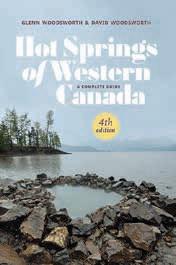
From Where I Stand
 by Jody Wilson-Raybould (UBC Press $24.95)
by Jody Wilson-Raybould (UBC Press $24.95)
Lha yudit’ih We Always Find a Way by Lorraine Weir with Chief Roger William (Talonbooks $35)
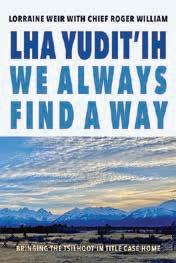
Having shaken up federal politics when she went from being a senior cabinet minister in Justin Trudeau’s Liberal government to becoming an independent Member of Parliament, Indigenous leader Jody Wilson-Raybould has published a collection of her speeches and lectures from the past ten years. She is forthright in her analysis of Canada’s colonial past and her desire for a new era of recognition and reconciliation.
It took 25 years to win their court case but the Tsilhqot’in Nation became the first in Canada to get a declaration of Aboriginal Rights and Title to a specific piece of land. Chief Roger William tells the oral history of this fight as well as ancient stories of creation; colonial genocide through smallpox and residential schools; and resistance including the Tsilhqot’in War and actions against logging and mining.
Every Little Scrap and Wonder: A Small-Town Childhood by Carla Funk (Greystone $29.95)
Gumboot Guys: Nautical Adventures on British Columbia’s North Coast edited by Lou Allison, compiled by Jane Wilde (Caitlin $26)

In the 1970s a stream of women seeking a new way of life on BC’s West Coast, from Prince Rupert and Haida Gwaii to the Comox Valley was the subject of Gumboot Girls and Dancing in Gumboots. But men came too as told in this follow-up about running boats, learning to navigate the ocean, the abundance and decline of salmon stocks, and other tales of guys on the sea.
Poet Carla Funk grew up in a Mennonite community in Vanderhoof. After publishing five books of poetry, this is her first memoir, a paean to childhood and rural life in British Columbia. Paying tributes to both her church-going mother and her truck-driving father, she uses rich language to create the world that shaped her as a person and writer.

This guide to 115 hot springs located mostly in BC but also Alberta, Yukon and NWT, covers access, conditions, history and other interesting facts about these natural wonders. Includes Fairmont and Harrison, Hot Springs Cove in Clayoquot Sound and many more hidden away in the wilderness known only to locals—or owners of this updated guidebook.
Sockeye Silver, Saltchuck Blue by Roy Henry Vickers & Robert Budd (Harbour $9.95)
With catchy rhymes married to Roy Henry Vickers signature artwork, this children’s board book is the third instalment in a series that started with Humpback! One Eagle Soaring The concepts of colours are linked to the changing seasons on the West Coast: red tones of huckleberries in summer, silver and red flashes of spawning salmon in fall, grey rain in winter, and the sprouting of green in spring.
Inside the Belly of an Elephant: A Motorcycle Journey of Loss, Legacy and Ultimate Freedom by Todd Lawson (RMB $30)

After his brother Sean’s death from malaria during a motorcycle trip that the two were on in southern Africa, Todd Lawson went on a motorcycle adventure with his soulmate Christina to spread Sean’s ashes—carried back to Canada from Africa inside the belly of a carved wooden elephant— through every country in the Americas.
The Survival Guide to British Columbia by Ian Ferguson (Heritage House $19.95)
Having moved to B.C., humorist Ian Ferguson finds the place pretty – but also pretty scary. Here’s his guide on surviving everything from the province’s politics, the locals and the weather, to our food and fashion sense. Some ‘Fergusonian’ wisdom: B.C. is located – “to the left of Alberta”; speaking to B.C.’ers, means “not saying anything beyond, ‘I love trees’ and ‘forgive me’; and, you can “tell an outsider (filled with enthusi asm and interest) from a local (full of resentment and ennui).”
East Vancouver–born Norman Nawrocki has released two books: Red Squared Montreal (Black Rose Books $20), a novel about the 2012 mass student strike that rocked Quebec, told through the eyes of a student striker; and Isabelle Walks With Angels: A Montreal Urban Legend (Les Pages Noires $24.99), an illustrated magical tale about a despairing woman who encounters extraordinary happenings when she meets an all-women biker gang. Nawrocki will launch both books Saturday, September 16, at People’s Co-op Bookstore in Vancouver.
Red: 9781551648019; Isabelle: 9782980576393
pilot’s grieving wife, a younger pilot he was mentoring and an accident investigator with a dangerous secret. This page-turner delves into the emotional lives of people and “the ways we try to conceal and redeem our lives,” says publicity. Peck’s debut novel was The Broken Places (NeWest, 2022).
9781774390757
Author Samantha Beynon and illustrator Lucy Trimble were recognized at the sixth annual Indigenous Voices Awards (IVAs) for their picture book for children, Oolichan Moon (Harbour $24.95). The story is about the passing down of knowledge from Nisga’a Elders and the sacredness of traditional foods, particularly the oolichan fish—teaching us to only take what is needed and to always give something back.

9781550179927
Frances Peck’s second novel, Uncontrolled Flight (NeWest $24.95), takes place during a BC wildfire (an earthquake in Vancouver was the backdrop for her first novel) when an experienced firefighting pilot crashes his airplane. The aftermath deals with the dead

A disabled writer living in the Okanagan Valley, Sally Quon has published a collection of poems, Beauty Born of Pain (Okanagan Publishing House $23.99), containing four groupings. “Secrets” details the experience of an abusive marriage. “Echoes” is about the return of childhood memories once free of the hurtful relationship. “Damage” is about the lingering effects of the past on mind and body. The final section, “Recovery,” is about moving forward with hope and healing.
9781990389306
IAN THOMAS

Winner of the 2023
Raven Chapbooks Contest
“ Green Islands presents a thrilling fusion of the finely observed and the visionary poetic…. abundant with lines that keep ringing, in the mind and the body, long after they are read.”
-judges’ citation
ISBN: 978-1-7781603-1-8 $22.95

Twenty years in the making, Four Seasons by the Salish Sea: Discovering the Natural Wonders of Coastal Living (Heritage $32.95) is Carolyn Redl’s love letter to the land she has called home since 2001. Illustrated with photography by Nancy Randall, the book is equal parts travelogue, memoir, and natural history. “How often have you heard someone say, ‘when I retire, I’ll move to the island’?”
she queries. “‘Hurry,’ I want to urge them. ‘Life here is even more amazing than you can imagine. It is paradise.’”
9781772034479
Surrey’s Harpreet Singh Sekha writes in Punjabi about gender inequality, social justice, and the immigrant experience. His short story collection Prism (Ekstasis $24.95), recently translated into English, tells of an Indo Canadian woman earning money as a prostitute in order to open a clothing store; a Punjabi husband taking on house and child caring duties because his wife earns more than he does; a Punjabi mother worried about her son being raised by her husband, who is not the biological father; and others. Prism garnered critical recognition and was named a finalist for the Dhahan Prize in Punjabi Literature.

9781771714204
Sharon Thesen has lived most of her life in BC and has written 12 books of poetry, of which three were finalists for Governor General’s Awards. Refabulations: Selected Longer Poems (Talonbooks $24.95) is a collection from her oeuvre ranging from her first book, published in 1980, to today. In an interview included in the book, Thesen says of a poetry-filled life: “Really that’s the desire and it’s what I live, what we share and where we can meet; a life in poetry, and not a ‘career’ in it.”


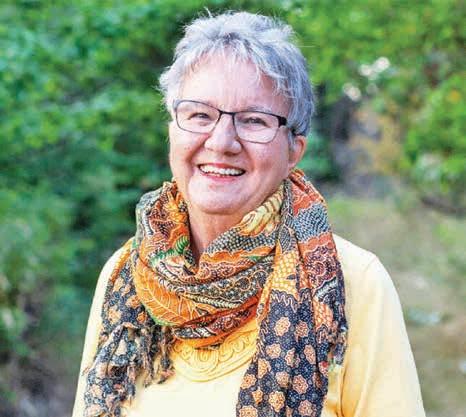
9781772015102


RAVEN CHAPBOOKS POETRY CONTEST 2024 POETRY CONTEST
This year, the Raven Chapbooks Poetry Contest is open to all emerging and established poets living in B.C. Full description and contest guidelines available on the website: ravenchapbooks.ca
We are pleased to announce the 2024 contest judges, Mary Ann Moore and Ursula Vaira.
Entries must be received by November 30, 2023. Manuscripts are blind judged— winner will be announced March 1 and published June 2024.
 by Robert Amos
by Robert Amos
The third volume of Robert Amos’ series on BC artist E.J. Hughes (1913 – 2007) covers the period of Hughes’ service in the Second World War. Hughes became Canada’s first, last and longest-serving War Artist of this conflict. He was also the most prolific. The book features seventy artworks from the Canadian War Museum’s holdings,
expanded with many personal photos and sketches from the artist’s papers. The narrative situates Hughes’ wartime work within the broader context of his life and his development as an artist. With the care and knowledge of a fellow artist, Amos draws the reader into this important chapter in the life of E. J. Hughes and Canadian art.
SHORTLISTED TITLES
Wilson Duff: Coming Back, a Life (Harbour Publishing) by Robin Fisher

Chinese Victoria: A Long and Difficult Journey (Discover the Past) by John Adams
The Basil Stuart-Stubbs Prize was established in memory of Basil Stuart-Stubbs, a bibliophile, scholar and librarian who passed away in 2012. Stuart-Stubbs’ many accomplishments included serving as the University Librarian at UBC Library and as the Director of UBC’s School of Library, Archival and Information Studies. Stuart-Stubbs had a leadership role in many national and regional library and publishing activities. During his exceptional career, he took particular interest in the production and distribution of Canadian books and was associated with several initiatives beneficial to authors and their readers, and to Canadian publishing. Pacific BookWorld News Society co-sponsors this award with UBC Library.


Jules Sherred of Duncan works as a commercial food photographer and stylist, writer, journalist and outspoken advocate for disability and trans rights. He created the Disabled Kitchen and Garden website and has published Crip Up the Kitchen: Tools, Tips and Recipes for the Disabled Cook (Touchwood $35) to include disabled and neurodivergent people in the conversation around food. With 50 recipes that make use of three key tools—the electric pressure cooker, air fryer and bread machine—Sherred’s book aims to make the kitchen accessible and enjoyable.
9781771513968

The undertold story of Black Vancouverite, Harry Jerome, who set several world records earning him the title of the world’s fastest man in the 1950s and 60s, is now chronicled in Races: The Trials & Triumphs of Canada’s Fastest Family (Goose Lane $24.95) by his sister Valerie Jerome, also an Olympic athlete. They accomplished these feats during an era of overt and violent racism. “It’s time Canadians knew the truth,” writes Valerie Jerome. “This is mine.”
9781773102900
The founder of Orange Shirt Day and an Indigenous survivor of the Canadian residential school system, Phyllis Webstad has released the kidlit picture book Every Child Matters (Medicine Wheel $24.99). The story details Webstad’s harrowing experience at residential school. Indigenous children were taught they did not matter, but Webstad seeks to turn the page on intergenerational trauma and promote healing. With illustrations by Karlene Harvey, Every Child Matters tells of the impact of the residential school system, while emphasizing the importance of culture, reconciliation and resilience.



9781778540165
A leg injury left Bronwyn Preece with a severely crooked knee, but it didn’t stop her from taking a grueling twoweek horse expedition through the isolated wilderness of Muskwa-Kechika in northeast BC, as she relates in her ode to backcountry beauty: knee deep in high water: riding the MuskwaKechika, expedition poems (Caitlin $20). “Packing pepperoni, power bars and painkillers,” Preece muses on her role as a settler and her fragility and strength in this land of melting mountains and rising rivers. 9781773861142

Marcus Youssef and James Long , co-writers of Winners and Losers (Talonbooks, 2015), a bestselling play about two men from different backgrounds arguing about

9781772014495

whether certain people, places or things—Tom Cruise, Mexico and microwaves—are winners or losers, have collaborated again. Do you mind if I sit here? (Talonbooks $16.95), due out December 2023, is set in Vancouver 30 years from now. Three social planners attempt to repurpose the longabandoned Russian Hall in Kitsilano for common use but are thwarted by a squatter in the building.
In her latest collection of poems, Orchid Heart Elegies (MQUP $19.95), Zoë Landale writes of death and mortality juxtaposed with the beauty of life, the physical world and the transformative power of music. “Even the animals understand / the insecurity of our perch; we are high-wire acrobats / about to tumble from the surface of the planet,” she writes, ending the last elegy with, “… the language of the mountains, / the cheer of chicory flowers that snatch your heart / with their ragged boutonnieres of sky, / are runes you can’t yet decipher, but will some day.”
9780228014393
Every child can love reading, they just need the right story to spark their passion. From board books and Early Readers to YA and graphic novels, we have a room full of carefully-selected titles. Start their story in The Children’s Bookshop at Tanner’s Books.


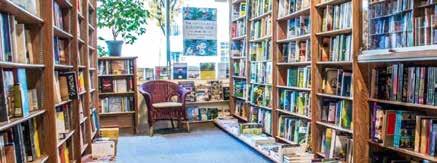



Robin Fisher won the 2022 Lieutenant Governor’s Medal for Historical Writing for Wilson Duff: Coming Back, A Life (Harbour). Lessons in Legitimacy: Colonialism, Capitalism, and the Rise of State Schooling in British Columbia (UBC Press) by Sean Carleton won the Canadian Historical Association’s Clio Prize and came in 2nd for the 2022 Lieutenant Governor’s Medal for Historical Writing. Heroin: An Illustrated History (Fernwood) by Susan Boyd and designed by David Lester was shortlisted for the Mary Scorer Award for Best Book by a Manitoba Publisher. At the Western Canada Jewish Book Awards, the Pinsky Givon Family Prize (non-fiction) went to Alan Twigg, editor of Gidal: The Unusual Friendship of Yosef Wosk and Tim Gidal (D&M). Tom Stewart of Tofino was shortlisted for a Whistler Independent Book Award (WIBA) in fiction for Immortal North (Lucky Dollar); Chief Robert Joseph was shortlisted for a WIBA in non-fiction for Namwayut: We Are All One (Page Two); H. PhamFraser of Richmond was shortlisted for a WIBA in children’s literature for The Little Girl (Friesen); and Rud Verhagen of Vancouver Island was shortlisted for a WIBA in children’s literature for The Last Green Dragon (Your Nickel’s Worth).
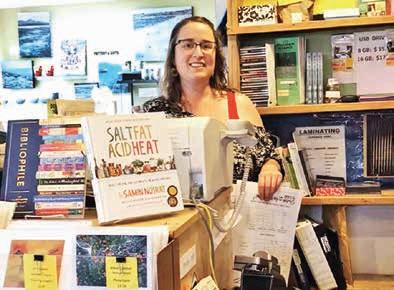
Abraxas Books on Denman Island celebrates its 30th anniversary this year. The current owner—artist Francesca Barker (above)—locally known as Tachi—is the second generation of her family to operate the store. She added a coffee shop and café in 2020, making the bookstore a hub for local writers, artists and community groups, as well as visitors to the island. Is a third generation waiting in the wings?
Robin MathewsDuring the COVID-19 pandemic when working remotely became common, Keith Baldrey, Global BC TV legislative bureau chief and one of BC’s best known political commentators, started reporting from his basement. With nothing but a window with bars and a blank wall as a backdrop, Baldrey had a friend jokingly ask if he was reporting from prison. When unofficial ratings for backdrops started popping up on the internet, Baldrey queried what would make his broadcasts look better so that he too could get a good rating. When advised that a bookshelf and a plant would help, he hastily put together the props. Someone noticed Baldrey had a BC-authored book on his shelf, and suddenly authors and publishers from around the province began sending their books to him. One author even flew to Victoria specifically to deliver their new publication to Baldrey. He continues to display BC books on his bookshelf, frequently rotating in new titles. Viewers now tune into his broadcasts to get the latest BC political news and catch sight of the current BC titles on Baldrey’s bookshelf.
To
New Star Books...16
Alcuin Society/Wayzgoose...30
Anvil Press...26
BC & Yukon Book Prizes...17

Banyen Books...37
Basil-Stuart Stubbs Prize...35
BC Ferries Books...33
Books On Mayne...37
Brick Books...25
Caitlin Press...22
Daly, Peter Sean...29
Douglas & McIntyre...6
Douglas College...36
Dundurn Press...10
EVENT Magazine...25
Filidh Publishing...30
First Choice Books...39
Friends of VPL...30
Friesens Printers...39
Galiano Island Books...37


George Ryga Award...19
Granville Island Publishing...16
Greystone Books...22

Harbour Publishing...40
Heritage Group of Publishers...4
Literary Press Group...31
Marquis Book Printing...39
Mermaid Tales Bookshop...37
New Society Publishers...25
NeWest Press...31
Nimbus Publishing...29
Orca Book Publishers...13
Penguin Random House...2
People’s Co-Op Books...37
Printorium/Island Blue...39
Project Amhara Foundation...17
Rebel Mountain Press...30
Raven Chapbooks...34
Ronsdale Press...15

Royal BC Museum...30
SFU Writers Studio...25
Symons, Philip...30
Talonbooks...26
The Struggle for Canadian Universities

The BC literary community lost an ardent Canadian nationalist when Robin Mathews died of cancer in Vancouver, April 25, 2023. Born in Smithers in 1931, Mathews graduated from UBC with an English degree and later earned an MA from Ohio State University. He taught Canadian literature at Carleton University before joining the Centre for Canadian Studies at SFU in 1986. Mathews’ home became an unofficial meeting place for his students, where he promoted Canadian literature and the hiring of Canadian professors at a time in the 1960s and ’70s when universities heavily recruited from the US and overseas. Mathews’ books, such as The Struggle for Canadian Universities (New Press, 1969) , co-edited with Jim Steele and Canadian Literature: Surrender or Revolution (Steel Rail, 1978) drew the ire of some academics and writers for alleged anti-Americanism. Mathews also wrote poetry, including Language of Fire (Steel Rail, 1976), The Beginning of Wisdom (Steel Rail, 1978), The Death of Socialism And Other Poems (Voyageur, 1995) and Being Canadian in Dirty Imperialist Times (Northland, 2000). His final volume of poetry was Think Freedom (Northland, 2004).
Tanglewood Books...37
Tanner’s Books...37
Tidewater Press...24
Ti-Jean Press...36
University of Alberta Press...29
UBC Press...2

University of Toronto Press...18

Vancouver Desktop...36
Vancouver Writers Festival...11
West, Hope...36
Whistler Writers Festival...28
Woodcock Lifetime Award...9
Word Vancouver...11
Yoka’s Coffee...29
We offer to thousands of publishers:

• Manufacturing of all types of books and all types of binding
• Fast turnaround time and flexibility with all print run sizes
• Innovative integrated printing and logistics solutions

• Fast online book replenishment with Marquis Express


• Eco-friendly manufacturing options
• Optimal quality colour printing on all types of paper with our new carbon neutral UV press











